
-
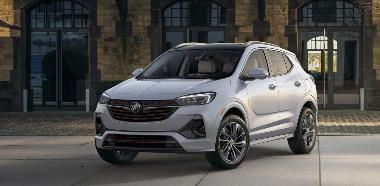
2020 Buick Encore GX: Bigger and More Powerful Than its Popular Sibling
Tuesday, Jun 9, 2020
Positioned between the small Encore SUV and the larger Envision and Enclave models, the all-new 2020 Buick Encore GX is essentially, a larger, second- …Positioned between the small Encore SUV and the larger Envision and Enclave models, the all-new 2020 Buick Encore GX is essentially, a larger, second-generation Encore, with more passenger and cargo room—nearly 5 cu.ft. more, and two turbo engine choices. Though the power plants are smaller than what propels the Encore, they provide slightly more power.Show More
As Buick has transitioned to an SUV purveyor, with 90 percent of its sales coming from SUVs, led by the popular Encore, Buick has added Encore GX to sell side by side with Encore, rather than retire the smaller original for a larger re-gen. Buick’s luxury small crossover, Encore, was launched for the 2013 model year, and from its inception, attracted new and younger buyers to the Tri-shield badge. With a combination of luxury features, fuel efficiency and safety, Encore is the signature luxury subcompact crossover in the Buick line. Now, with the new Encore GX, you get all of that in a larger package, with more power and safety.
More upscale, but perhaps less rugged-looking, the Encore GX 5-door subcompact crossover come in three trims: Preferred, Select, and Essence. A Sport Touring Package is available on all trims, with body-colored moldings and a custom grille and wheels, and all Encore GX trims come loaded with such accouterments as push button keyless start, stop-star engine control, engine air filtration monitor Interior, Buick® Infotainment System with 8-inch diagonal color touch-screen, Bluetooth® streaming audio for music and select phones, Apple CarPlay® capability for compatible phone, Android Auto™ capability for compatible phones, embedded apps, Noise control system, active noise cancellation, a comprehensive safety suite and much more.
Encore GX’s sculpted styling, honeycombesque grille, chrome accents and surrounds, portholes on the hood and painted lower panels are all upscale and trendy. And Encore GX fills the bill as a slightly larger small crossover than Encore, measuring three inches longer at 171.4 inches, an inch lower for stability at 64.1 inches, and 1.5 inches wider at 71.4 inches, on a 102.2-inch wheelbase, a gain of 1.6 inches over its Encore sibling. Curbweight for my Encore GX AWD Essence, was 3273 lbs, about 75 lbs. less than the last Encore I test drove.
Inside, Encore GX’s distinctive styling continues with standard cloth and leatherette front bucket seats, fold-flat front passenger seat, driver and front passenger knee bolsters, the 8-inch touchscreen, Apple CarPlay and Android Auto smartphone integration, an in-vehicle Wi-Fi hotspot and several advanced safety features.
The comfortable and upscale cabin is packed while accommodating driver and passengers with 39.7 inches of front headroom and 38.0 inches of rear seat headroom, slightly less than Encore. With seating for five (two in front and three in row two), Legroom is about identical to Encore, while shoulder room is about an inch more accommodating. Legroom measures 40.9 inches in row one and 36.0 inches in row two, while shoulder room measures 55.1 in front and 53.6 in the rear.
Buick Encore GX has two power options – a 1.2-liter Ecotec I-3 Turbo and an Ecotec 1.3-liter I-3. While both are smaller than Encore’s 1.4, I-4 Turbo, power for the 1.3 outguns the 1.4 with 155 hp and 174 lb-ft, compared with the 1.4’s 138 horses and 148 lb-ft. The smaller 1.2 is in the hunt at 137hp and 162 lb-ft. The 1.2 is estimated at 26mpg/city and 30mpg/highway, and my 1.3-liter test system is rated at 26/city, 29/highway in AWD configuration. A week of tests garnered an average of 27.7mpg combined over long highway runs and in-town errand runs.
Coupled to a 9-speed automatic transmission, was compliant, stable and predictable. Encore GX is not a sprinter, but there’s enough passing and uphill power for confident driving. Though inclement weather washed out my track tests, the way it accelerated makes me believe that I can do better than the 10.7-second sprint and 18-second quarter-mile my last test Encore accomplished. I think a 10.2-sprint and 17.6 quarter would seem realistic.
Safetywise, The Encore GX’s new standard safety and driver assistance features include Front Pedestrian Braking, Automatic Emergency Braking, Forward Collision Alert and Lane Keep Assist with Lane Departure Warning.
The 2020 Buick Encore GX starts at $24,100 for the Preferred trim in FWD; the Select trim starts at $25,700 in FWD, adding Lane Change Alert with Side Blind Zone Alert, Rear Cross Traffic Alert, heater front seats, remote start and automatic climate control; and the Essence trim starts at $28,500 in FWD, adding leather-appointed seating, LED headlamps and taillamps, heated leather-wrapped steering wheel, air ionizer and 120-volt outlet.
My test Encore GX in Essence trim, upgraded from FWD to AWD and gained the 1.3-liter turbo engine for $2000 extra. Premium colors add $495, but my test ride came in Summit White, as standard, mated to an Ebony leather-appointed interior. The Experience Buick Package ($1995) added SiriusXM, Panoramic Buick sunroof, infotainment, navigation, 8-inch diagonal color touch-screen, 18-inch Medium Android High Gloss wheels with chrome inserts and HD Rear Vision Camera. The hands-free power liftgate added $520; a 7-speaker Bose Premium Audio System added $595; all-weather floor mats were $150 and destination freight charged added $995. That put the sticker-as-tested at $34,755, but a total cash allowance discount of $1500 was available, making the price-as-tested $33,255. Check with your dealer for promotions and discounts.
> Visit www.CarlisleEvents.com for more on the automotive hobby.
Mike Blake, former editor of KIT CAR magazine, joined Carlisle Events as senior automotive journalist in 2004. He's been a "car guy" since the 1960s and has been writing professionally for about 30 years. </I>
-
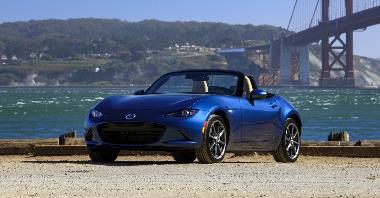
2020 Mazda MX-5 Miata RF: A Fun-to-Drive Roadster with a Folding Roof
Tuesday, Jun 2, 2020
Since its 1989 launch, the Mazda MX-5 Miata has become the most popular roadster/two-seat convertible sports car in the world, with more than a mil …
Show MoreSince its 1989 launch, the Mazda MX-5 Miata has become the most popular roadster/two-seat convertible sports car in the world, with more than a million vehicles sold. The fourth generation MX-5 was unveiled in 2014, and in late 2016, a new MX-5 RF (Retractable Fastback) model was added to the mix, featuring a rigid roof and buttresses that give the silhouette a more coupé-like appearance than the soft-top convertible.
In the sixth year of its current generation, MX-5 Miata gains a few small tweaks including adding as standard, Mazda's i-Activsense suite of driver-assistance features. The package includes forward-collision warning, automated emergency braking, blind-spot monitoring, and lane-departure warning. Also new for the 2020 sports roadster are a trendy new badging font, new keyfob, new exterior and interior color choices, and some top-trim add-ons. Apple CarPlay and Android Auto capability is now standard on Club and Grand Touring models, and the Grand Touring trim gets the sport suspension and limited-slip rear differential that also steadies the Club model.
The rest of the fun-driving sports car that added power and safety upgrades a year ago, remains intact.
I tested the RF (Retractable Fastback) convertible version that seems to be more than simply a convertible, and not quite a hardtop. The RF is more of a fastback that changes at your will, by slipping its retractable roof away in about 13 seconds while keeping its fastback profile. Then in another 13 seconds, the roof and true fastback can resume function. Upon opening, the roof section immediately overhead folds and stows below the buttresses, which lift temporarily out of the way. The glass rear window between the buttresses rolls down to give a more open-air feel and the entire power-folding roof mechanism occupies the same space as the standard manual-folding soft-top, so there’s no loss of trunk space.
The 2020 Mazda Miata MX-5 measures 154.1 inches long, 68.3 inches wide and 48.6 inches high (my RF trim was 49 inches high), on a 90.9-inch wheelbase. Light, at 2432 pounds curbweight for my test ride, and going as low 2338 pounds in some configurations, the MX-5 Miata performs in sports car fashion without sports car power. Minimum ground clearance for my RF trim was 5.32 inches – some trims are under 5 inches.
The interior fits like a cockpit, and seems to glove around the driver and passenger. Interior design and enhancements are upscale, cozy, intuitive and tech-filled. Visibility is excellent even with the top up, and while one would expect a noisy cabin from a roadster, engine and road noise and vibration permeate the environment even with the top in place. The infotainment screen is easy to read, and controls are easy to reach. Fun-driving is the two-seater’s mission, delivered in a tight space of 37.4 inches of headroom (36.8 for the RF), legroom of 43.1 inches and shoulder room of 52.2 inches.
MX-5 power numbers won’t knock your socks off, but they are fine for this light two-seater. MX-5 Miata uses a SKYACTIV 2.0.-liter DOHC 16-valve in-line 4 VVT multi-port electronic fuel injection engine, either manual or coupled to a 6-speed manual transmission. The system delivers 181 horsepower and 151 lb-ft of torque, easily accelerating the light roadster past traffic, up steep inclines, and excitingly along highway cruises, while finishing off a zero-to-60mph test track sprint in 5.7 seconds during a 14.4-second quarter-mile (hand-timed).
The system is EPA rated at 26mpg in city driving and 35mpg on the highway for the automatic and 34mpg for my manual shift. My mixed-use testing that was peppered with a lot of tire smoking and dragstrip acceleration showed an average of 29.9mpg.
A fun drive, the MX-5 was balanced on the road, though quick auto-cross turns exhibited some exciting-to-compensate-for body roll. The suspension allows you feel the road beneath you for full driver engagement.
The 2020 Mazda MX-5 is available in three trims – Sport, Club and Grand Touring -- and the RF is available in two trims – Club and Grand Touring. The MX-5 Sport bases at $26,580 with a manual transmission and 181-hp 2.0-liter engine, and $27,930 for a 6-speed automatic. The Club starts at $30,290 for the stick and $30,890 for the automatic, and adds a rear spoiler, cosmetics and tech; and the Grand Touring trim starts at $31,670 for the manual and $32,195 for an automatic trans, and adds dark finish wheels, rain-sensing windshield wipers, auto-dimming driver's side mirror, automatic climate control, leather-trimmed seats, Mazda Navigation System and more. My test roadster was the RF, starting with the Club in manual at $33,045 and Grand Touring at $34,425. For me, a roadster isn’t a roadster if it doesn’t have a stick, so I saved $325 by NOT getting an automatic on my Grand Touring trim.
The Eternal Blue exterior paint was at no extra charge, but I would have preferred Jet Black Mica (no charge) or Soul Red Crystal Metallic for $595. Already packed with standard items, no other cosmetic or weather packages were in my build. With a destination fee of $945, my test 2020 Mazda MX-5 Miata RF stickered at $35,370.
<I> Visit www.CarlisleEvents.com for more on the automotive hobby.
Mike Blake, former editor of KIT CAR magazine, joined Carlisle Events as senior automotive journalist in 2004. He's been a "car guy" since the 1960s and has been writing professionally for about 30 years. </I>
-
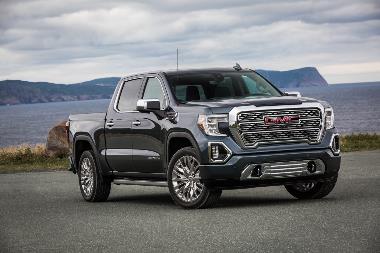
2020 GMC Sierra 1500 Denali: More Tech, Lots of Cameras and a Carbon-fiber Bed
Tuesday, May 26, 2020
When General Motors began the GMC truck line in 1912, it stood on its own as a durable work truck. Over the next century, GMC seemed to be a Chevy …
Show MoreWhen General Motors began the GMC truck line in 1912, it stood on its own as a durable work truck. Over the next century, GMC seemed to be a Chevy truck clone with different trims, power and pricing variances. Building its own rep that included a perception of extra strength and ruggedness, GMC has sought to distance itself further from its Bow-tie sibling. With the 2020 GMC Sierra, the truck badge differentiates itself from its sister, the Chevrolet Silverado, with exclusive features and five engine options.
Mechanically, a Silverado twin, Sierra’s carbon-fiber bed option, six-function Multi-Pro Tailgate, and new Enhanced ProGrade Trailering System with 15 cameras, help give Sierra its own personality.
New for 2020, the Sierra Denali trim gets a 10-speed automatic transmission, up from an 8-speed last year. The new industry-first Carbon-fiber cargo box is available and was developed to increase durability, efficiency and functionality, while offering best-in-class dent, scratch and corrosion resistance. New features include adaptive cruise control, trailer tow mirrors, HD Surround Vision with two trailer camera provisions, and a trailer-tow bed-view camera system.
Sierra 1500 offerings include 6 trims, regular cab, double cab and crew cab body styles — all offered with 2WD or 4WD, and various box configurations.
Built for lightness with a mixed materials approach — including aluminum for the doors, hood and tailgate, with steel for the fenders, roof and standard cargo box, each of Sierra’s trims have styling nuances. I tested the top-of-the line Sierra Denali, distinguished by iconic design cues, a tall, strong, purposeful stance, accented by bold bodywork, chiseled shoulders and a tall, powerful hood, capped with a grille that’s big and bold.
The Sierra 1500 trims are muscular and versatile in three cab styles. Sierra’s length runs from 229.6 inches with a regular cab and 8-foot box, to 231.7 inches with either a double cab and 6-6 box or the crew cab and a 5-foot-8 box. The Crew and 6-foot-6-inch box is 241.3 inches long. The Sierra Denali I tested, with crew cab and short box, sat on a 147.4-inch wheelbase (regular cab models are on a 157-inch wheelbase). Width goes 81.2 inches and height is 75.5 inches. Curbweight for the 4WD short-box Sierra Denali Crew Cab is a robust 5040 lbs. (regular cabs go as low as 4520), and the max trailering rate is 12,200 lbs
GMC offers an engine for every taste … five of them -- 4.3-liter V-6, 5.3-liter V-8, 2.7-liter turbo, 6.2-liter V-8 or a 3.0-liter turbo-diesel. Fuel economy runs from 15 to 23mpg in city driving and from 19 to 26 mpg on the highway. Powerwise, the 4.3 gets you 285hp and 305 lb-ft; the 5.3 rates at 355hp/383 lb-ft; the 2.7 turbo runs 310hp/348lb-ft; the 6.2 delivers 420hp/460 lb-ft. and the 3.0-liter I-6 turbo pops 277hp/460 lb-ft.
My 6.2-liter Sierra Denali was an upgrade over the standard 5.3 and was rated at 15mpg/city and 20mpg/highway -- I averaged 18.0 mpg in my heavy-footed tests, and I pedal mashed often, with power answering when called. Handling was floaty and big-trucklike, and steering was a bit vague, but power was never in question. The 6.2 responded with a 6.1-second zero-to-60mph dash, and a 15.5-second quarter-mile, with excellent passing power and hesitant low-range response in town. The independent front suspension with coil-over-shock and twin-tube shock absorbers works well with the solid axle rear with semi-elliptic, variable-rate, two-stage multileaf springs, and splayed twin-tube shocks to glide over road ruts, but there is some float at speed and sway in quick turns.
Inside, Sierra Denali is a luxury truck with leather and the latest advances in connectivity, tech, environmental controls and safety included. Sierra Denali’s luxuriously crafted cabin is roomy with 43 inches of front headroom in the crew cab version and 40.1 in the rear. Legroom is a comfortable 44.5 inches up front and 43.4 in the cab, and shoulder room is 66.0 and 65.2.
The base regular cab, standard box 2020 GMC Sierra 1500 starts at $31,195 for 2WD and long box, and moves through multiple trims, cabs, beds and engines, topping out with the Denali trim short-box, basing at $50,690 with 2WD and the 5.3-liter engine. I upgraded to 4WD, which gave me the option to also upgrade to the 6.2-liter engine. The 4WD configuration added $3500, and the 6.2-liter was $2700 more than the 5.3, to change the base to $56,385. Carbon Black Metallic exterior paint added $495 and was mated to Jet Black Forge perforated leather appointed seat trim -- and black-on-black was a beast. Playing on the Black Carbon Fiber, my test truck added the CarbonPro Carbon Fiber Composite Bed, 22-inch High Gloss Black Wheels and Multi-Pro Audio System by Kicker, for an additional $3555 with the Denali CarbonPro Edition package. That set-up also came with a power sunroof, rear camera mirror, Automatic Emergency Braking, Lane Keep Assist with Lane Departure Warning, Forward Collision Alert, Following Distance Indicator, Head-Up Display, Adaptive Cruise Control – Camera, GMC MultiPro Power Steps, and more. Destination Freight charges of $1595 put the sticker-as-tested at $63,185, but a massive cash allowance discount of $6500 put my net price at $56,685, so check with your dealer and see if you can cash in on discounts.
> Visit www.CarlisleEvents.com for more on the automotive hobby.
Mike Blake, former editor of KIT CAR magazine, joined Carlisle Events as senior automotive journalist in 2004. He's been a "car guy" since the 1960s and has been writing professionally for about 30 years. </I>
-
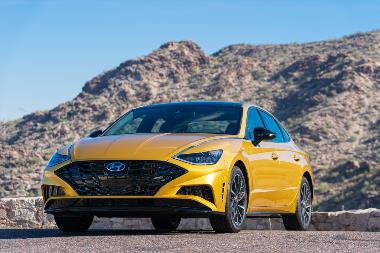
2020 Hyundai Sonata: All-new look, feel, personality and power
Tuesday, May 19, 2020
Hyundai’s Sonata began life in 1985 as a car built solely for use within Korea. It came to North America for the first time in 1988 as a second-gen …
Show MoreHyundai’s Sonata began life in 1985 as a car built solely for use within Korea. It came to North America for the first time in 1988 as a second-generation mid-size, with an Italian design by Giorgetto Giugario. Following a refreshening in 1991, Sonata replaced the Stellar as the core family sedan in the Hyundai line-up.
For 2020, Hyundai’s most enduring and most successful model begins its eighth generation following a complete redesign. According to Hyundai, the 2020 Sonata is unlike any of its predecessors, showcasing a new design philosophy, an all-new Smartstream G2.5 GDI engine and segment-first technology that can be personalized.
Hyundai’s signature product is the first sedan designed with Hyundai’s Sensuous Sportiness design language, creating a fully transformed vehicle empowered with a sporty four-door-coupe look that focuses on delivering emotional value using proportion, styling and technology. From the front, the 2020 Sonata is all-new, with cues that don’t immediately appear Hyundai-like.
In addition to its design change, new for 2020 Sonata are vehicle platform improvements in safety, efficiency and driving performance; Sonata’s Digital Key, a Hyundai first that allows the vehicle to be unlocked, started and driven without a physical key, via a smartphone; and hidden lighting lamps that turn chrome when off and lit when on. The new Sonata also uses an extensive application of advanced technologies to boost comfort, convenience and active safety. It is also the first model to premiere a new collaboration with Bose® to deliver an upscale audio experience.
Sonata’s new look blends two sharp character lines, and concave and convex forms are carefully orchestrated to provide a sexy, coupe-like character. A newly designed Digital Pulse Cascading Grille spans the front, finishing at the innermost points of new combination headlamps that feature a distinctive and innovative new lighting architecture. At the rear, a wide horizontal line extends across the center of the trunk, stretching to the edges of the car.
About 2 inches longer and an inch lower than last year, the new Sonata is more stable and confident, standing 192.9 inches long, 73.2 inches wide and 56.9 inches high on a 111.8-inch wheelbase.
From a power perspective, the light, (from 3120 lbs to 3336 depending on trim and engine), Sonata performs well with small-block engine choices. The base engine is a 2.5-liter 191-hp engine that shows a 6-hp gain over last year’s 185-hp 2.4-liter. Torque is up 3 lb-ft at 181 lb-ft, and fuel economy gains an estimated 4 mpg at 32mpg/combined, 28/city, 38/highway. On the SEL Plus and Limited trims, a 1.6 liter turbo is offered, that produces 180hp and 195 lb-ft. and fuel estimates of 31/combined, 27/city and 36/highway. Both engines are in FWD configuration and linked to an 8-speed automatic transmission. My tests in the 2.5 averaged 31.1mpg in mixed-use tests.
Performance was confident, and I was able to put down a zero to 60mph sprint in 8-seconds flat (hand-timed) seconds with a best quarter-mile of 16-flat (hand-timed).
While the engine was loud and produced in-cabin vibration and sound, the ride was smooth, the handling true and the overall experience was relatively luxurious.
Suspension is meant more for passengers than the driver, as some drivers like the feel of road nuances, and the Sonata ride was pampering, as the MacPherson strut front suspension with coil springs and the multi-link independent rear take most irregularities out of the road surfaces. Column-Mounted Motor Driven Power Steering was attentive and predictable, with only slight understeer.
In the lush cabin, bathed in ambient mood lighting enhanced by a rich, modern instrument panel, and driver/passenger comforts and environmental and entertainment amenities, Sonata is generous except for tight rear headroom. The cabin provides 40 inches of front headroom with 37.8 in the second row; 46.1 inches of front leg room with 34.8 inches in row two; and shoulder room of 57.9 up front and 56.1 behind.
Hyundai has made safety features a priority with this new generation, and the 2020 Sonata earned a five-star top rating from the National Highway Traffic Safety Administration and was named a Top Safety Pick by the Insurance Institute for Highway Safety. Hyundai's SmartSense package of driver-assistance features is standard, and includes forward-collision avoidance, lane-keeping assist, automatic high-beam assist, adaptive cruise control, and a driver-attention warning that can sense drowsy or distracted driving. The new Sonata maximizes occupant safety throughout, from a comprehensive nine-airbag set-up to a range of active and passive safety technologies.
The 2020 Hyundai Sonata is available in several packages from entry-level to packed. The midsize sedan starts at $23,600 in SE trim, $25,700 for the SEL, $27,650 for SEL Plus and $33,500 for the top-of-the-line Limited trim. My test SEL was nicely accessorized, and added the Convenience Package for $1200, furnishing a 12.3-inch LCD instrument cluster, Hyundai Digital Key, Wireless device charging, auto-dimming rearview mirror with HomeLink®, leather-wrapped steering wheel and more. A Panoramic Sunroof added $1000, mudguards were $115, exterior color options added $300, and freight added $995 for a sticker-as-tested of $29,290, but retail bonus cash programs of up to $1500 might be available, and $500 Military and First Responders programs may be available, so check with your dealer.
> Visit www.CarlisleEvents.com for more on the automotive hobby.
Mike Blake, former editor of KIT CAR magazine, joined Carlisle Events as senior automotive journalist in 2004. He's been a "car guy" since the 1960s and has been writing professionally for about 30 years. </I>
-
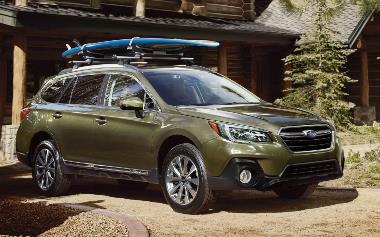
2020 Subaru Outback: New-Generation SUV-Wagon Quick, Stylish and Loaded
Tuesday, May 12, 2020
Subaru’s Outback crossover enters its sixth generation with an all-new model, its first redesign since 2015. Never seen as a rugged SUV, and fittin …
Show MoreSubaru’s Outback crossover enters its sixth generation with an all-new model, its first redesign since 2015. Never seen as a rugged SUV, and fitting in more as an SUV/Wagon vehicle the 2020 Outback is marketed as durable, versatile, stylish and robust.
Powering up for 2020, Outback offers a 2.4-liter turbocharged BOXER engine standard on XT trim models, balanced by a bevy of safety measures. Also onboard for 2020, are a new Hands-Free Power Gate, Tablet-style high-definition SUBARU STARLINK 11.6-inch touchscreen, standard EyeSight Driver Assist Technology with Advanced Adaptive Cruise Control with new Lane Centering function, and the debut of the Onyx Edition XT trim level with unique exterior and interior.
And Outback is loaded. My test Outback XT Limited was outfitted with the turbo engine, automatic transmission, symmetrical all-wheel drive, leather-trimmed upholstery, power tilt/sliding moonroof, SUBARU STARLINK® Multimedia, dual-zone climate control, 18-inch alloy wheels, electric power-assisted steering, 4-wheel independent raised suspension, brake assist, LED responsive steering headlights, LED fog lights, body-color folding side mirrors with integrated turn signals, power adjustable driver and front-passenger seats, leather-wrapped heated steering wheel, Keyless Access with Push-Button Start and PIN-Code Access, Harman Kardon premium audio system with 4G LTE Wi-Fi capability and much more.
The all-new Outback is built at Subaru of Indiana Automotive in Lafayette, Indiana on the Subaru Global Platform, with a fresh look and stronger structure that is 70-percent stiffer in both torsional and front-suspension rigidity and 100-percent stiffer in both front lateral flexural and rear subframe rigidity compared to the previous Outback’s platform. Crash protection is improved, as the new body absorbs over 40-percent more energy in front/side crashes than the current model.
Outback projects a large presence from thicker profile panel surfaces and raised rear gate as well as a sense of speed from its dynamic silhouette. Wider fenders, large hexagonal grille, front cladding and LED fog lights on the corners emphasize Outback’s capability. Side cladding, meant to resemble a hiking boot, further enhances this concept.
The new Outback is slightly larger than last year, gaining 1.4 inches in length to 191.3 inches; gaining 0.6 inches in width to 73.0 inches; remaining at 66.1 inches in height and keeping its 108.1-inch wheelbase. Ground clearance remains 8.7 inches and the Outback gains about 10 lbs. with a curbweight ranging from 3634 pounds to 3772 for the base models depending on trim. The XT models go from 3884 lbs. to 3937 lbs.The interior design uses a widened windshield and long lines from the center of the instrument panel to the door panels to create an open environment. The Outback Touring leverages luxurious appointments inside and out, including Nappa leather, high-gloss black molding for the pillars, chrome plating decorated door handles and satin tone plated side mirrors.
Comfortable inside with seating for five, interior sightlines are unimpeded, and roominess abounds, though headroom has tightened a bit to 40.1 inches in front (diminished by 0.7 inches), and 39.1 inches for passengers in row two; 42.8 inches of first-row legroom and 39.5 inches for second-row passengers, and shoulder room of 58.1 and 57.4. Cargo volume is 75.7 cu.ft. with seats folded .The Outback line-up offers two engine choices. For the first time since 2009, the Outback lineup offers a turbocharged engine, the 2.4-liter turbocharged BOXER engine, standard on XT trim models. It delivers robust all-around performance with 260 horsepower and 277 lb-ft of torque, with an EPA rating of 23/city, 30/hwy and 26/combined mileage. Meanwhile, the standard naturally aspirated 2.5-liter BOXER with direct injection delivers 182 hp and 176 lb-ft of torque, for an EPA estimate of 26/33/29. My test ride, the Outback XT Limited, sported the turbo, and I averaged 24.9mpg during my pedal-mashing tests.
Paired with a Lineartronic CVT featuring an 8-speed manual mode function with steering wheel paddle shifters, my Outback accelerated responsively and smooth for the niche, and passing at speed is predictable. From a stop, my test Outback XT Limited completed a niche-quick zero-to-60mph dash in 6.4 seconds during a 14.8-second quarter-mile.
Outback has been a crash safety and passive safety leader for years and that level is reached again for 2020. Outback is equipped with the EyeSight® Driver-Assist Technology crash prevention system, High Beam Assist, DriverFocus™ Distraction Mitigation System, Blind-Spot Detection with Lane Change Assist and Rear Cross-Traffic Alert, Reverse Automatic Braking, Traction Control, Brake Assist, Brake Override System, RearVision Camera, Subaru advanced frontal airbag system , side curtain airbags, seat-mounted front side impact bags, front passenger seat cushion airbag, driver’s knee airbag and lots more.
The base 2020 Outback with the 2.5-liter Boxer engine is priced at $26,645 and runs through four trims, topping at the Touring at $37,345. The XT version with the 2.4-liter turbo has three trims: the Onyx Edition XT ($34,895), Limited XT ($37,745) and Touring XT ($39,645). My test Outback XT Limited in Autumn Green Metallic, with a Slate Black Leather interior, and as mentioned above, the XT Limited is loaded, so much so that no optional packages are offered. Other options were available, but all my test ride added was a Moonroof Air Deflector for $99.99, Remote Engine Starter for $463, Body Side Molding for $292, Door Edge Guards for $168 and splash guards for $172. With destination and delivery charges of $1010, the sticker-as-tested was $39,949.
> Visit www.CarlisleEvents.com for more on the automotive hobby.
Mike Blake, former editor of KIT CAR magazine, joined Carlisle Events as senior automotive journalist in 2004. He's been a "car guy" since the 1960s and has been writing professionally for about 30 years. </I>
-
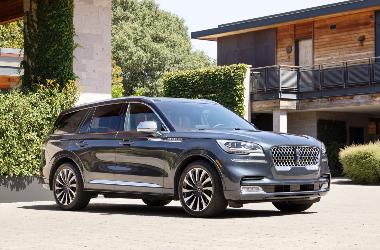
2020 Lincoln Aviator: All-New Mid-Size SUV Brings Luxury, Power and a Plug-in to the Game
Tuesday, May 5, 2020
Originally produced from 2003 through 2005 as a rebadged version of the Mercury Mountaineer, the Lincoln Aviator is back for its second generation …
Show MoreOriginally produced from 2003 through 2005 as a rebadged version of the Mercury Mountaineer, the Lincoln Aviator is back for its second generation as a mid-size five-door, three row luxury SUV.
The all-new Aviator is based on the Ford Explorer but this is more than a rebadge. Aviator has its own upscale styling, sculpting, engine, chassis makeup and tech. In addition, its attention to luxury sets Aviator apart from any of its kin.
The all-new 2020 Lincoln Aviator is missioned with combining beauty, performance and advanced technology, and debuting an electrified hybrid system. With a gas-powered 400hp /415 lb-ft of torque engine and a plug-in hybrid system that provides 494hp and best-in-class 630 combined lb-ft of torque, Aviator is built for power and capability joining with sleek elegance and intuitive technology.
Delivering what Lincoln calls “Quiet Flight,” Aviator offers those two powertrains – a standard twin-turbocharged 3.0-liter V6 gas engine and the Grand Touring’s hybrid powertrain. This marks the first time Lincoln has combined a twin-turbocharged 3.0-liter V6 engine and advanced electrified hybrid technology capable of delivering smooth performance and quick-acting torque.
On the outside, Lincoln plays off the Aviator name with a look, marketed with a sky-driven approach: “The boundless allure of flight has long inspired automotive design, and the exterior styling of the all-new Lincoln Aviator takes that inspiration to the next level. The connotations of flight are intrinsic in the strong front and tapering rear of the vehicle, creating a distinct aerofoil analogy,” according to Lincoln’s pitch. Exterior dimensions are 199.3 inches in length, a wind-attracting 69.6 inches in height and 82.3 inches in width on a 119.1-inch wheelbase, for a curb weight of from 4774 to 5673 lbs. depending on trim level and configuration. My Reserve trim weighed about 5000 lbs.
Inside, Aviator is packed with luxury appointments and comfort, a 14-speaker audio system with voice-activated touch-screen navigation system, three rows of seating, available concert hall sound, intuitive tech and function and a quiet environment of quality. Spacewise, you get 41 inches of front headroom (40.2 with a Vista Roof), 39.7 inches in row two and a tight 36.9 inches in row three. Aviator provides 43 inches of front legroom, with 40.1 in the middle and a child-only 29.2 inches in the rear seats; and 61.5 inches of front shoulder room with 61.3 in row two and 54.0 in row three.
Cabin climate is attended to by a Particulate Air Filter Tri-Zone Climate Control, with second row climate controls (with Audio and Heated/Vented Seat Controls when equipped). You also get a 10.1-inch LCD touch-screen in the center-stack, Ambient interior lighting, delayed Accessory Lighting in the first row, Lincoln Connect™ with 4G embedded modem with WiFi® hot spot capability, that enables Lincoln Way™ App remote features (when activated) and so much more we can’t do justice to listing them here.
Aviator is quiet and stable in both Front-wheel-drive and Intelligent All-wheel-drive configurations. My test Aviator Reserve in AWD was outfitted with the twin-turbocharged 3.0-liter V6 Engine with Stop-Start Technology. EPA rated at 27mpg/highway, 20mpg/city and 24mpg/combined, my short test came in at 22.1mpg. With the hybrid option, Aviator Grand Touring’s twin-turbocharged engine and advanced electrified technology lags a bit but you get impressive mileage and 20 extra miles when all-electric.
My 400hp plant was decisive, quick and seamless, and we powered through a zero-to-60mph sprint in 6-seconds-flat, during a 14.7-second (hand-timed) quarter-mile. On the highway, Aviator is quiet and steady with more than enough power to pass with nary a lag. The cushioned ride from the adaptive suspension is worthy of the price tag and Lincoln’s status as a luxury carmaker, and the 4-Wheel Disc Anti-Lock Braking System stops with authority when called upon. Aviator’s Electric Power-Assisted Steering is predictable and while there is some top-wobble during quick maneuvers, Aviator is confident in turns.
Safetywise, first, second and third row Blind Spot Detection with Cross-Traffic Alert begins the safety system, enhanced by Driver and Front Passenger Dual Stage, Side Impact, and Glove-Box-Door Integrated Knee Airbags. The Safety Canopy/Air Curtain (3-rows) with roll-over sensor adds to security as do Vehicle Inclination Sensor Remote, Keyless Entry SecuriCode™ (Keypad), SecuriLock® Passive Anti-Theft System, SOS Post-Crash Alert, Tire Pressure Monitoring System and Emergency Brake Assist Four-Way Adjustable Head Restraints.
The 2020 Lincoln Aviator is priced as a luxury vehicle, starting at $51,100 for the base Standard trim. The Reserve trim is next at $56,190, upgrading with 20-inch wheels, quad-zone climate control, optional packages including Lincoln Co-Pilot360™ Plus and more. The Aviator Grand Touring offers the rechargeable electric hybrid powertrain added to the standard Twin-Turbocharged engine, and keeps Reserve’s features, at $68,800. The top-trim Aviator Black Label starts at $77,695 with special themes, interior finishes and exclusive member service items. My Reserve in Infinite Black with an Ebony leather interior, upticked to All-Wheel-Drive for $2520, and added the $4930 Reserve 1 interior package for the Panoramic Vista Roof® with Power Sun Shade, the Elements Package and the Lincoln Co-Pilot360™ Plus Package. With Destination charges of $1095 and an Acquisition Fee of $645, my sticker came to $64,870, but available incentives of up to $800 may be available, so check with your dealer.
> Visit www.CarlisleEvents.com for more on the automotive hobby.
Mike Blake, former editor of KIT CAR magazine, joined Carlisle Events as senior automotive journalist in 2004. He's been a "car guy" since the 1960s and has been writing professionally for about 30 years. </I>
-
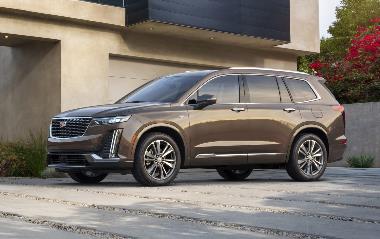
2020 Cadillac XT6: All-New Three-Row Family Crossover is a Luxury Mid-Size-Plus
Tuesday, Apr 28, 2020
Cadillac has expanded its crossover and SUV lineup with the 2020 XT6. The alphanumeric name is Cadillac-speak for Crossover Touring 6, and is the l …
Show MoreCadillac has expanded its crossover and SUV lineup with the 2020 XT6. The alphanumeric name is Cadillac-speak for Crossover Touring 6, and is the largest of the XT series, slotted as a mid-size, between Cadillac’s XT5 and the full-size Escalade. Produced in GM’s Spring Hill, TN plant, the XT6 shares its wheelbase with the GMC Acadia, Cadillac XT5 and Chevrolet Blazer and sits on the same platform as the Buick Enclave.
With Cadillac marketing it as a “mid-size-plus,” the all-new three-row family crossover centers on a luxurious, adaptable and connected cabin complemented by responsive handling and a comprehensive suite of standard and available safety technologies.
Marketed in two trim levels – “Premium Luxury”, and “Sport” – XT6’s seating configuration was intended to feature six seats, but made that an option, as its standard is as a seven-seater, so perhaps it should be renamed XT7?
Caddy-loaded, the 2020 XT6 offers a comprehensive suite of standard and available driver assistance and safety technologies, along with generous cargo capacity. XT6 is outfitted with the latest Cadillac user-experience items featuring intuitive controls including a rotary controller with new jog functionality. Additionally, the vehicle’s 9-speed automatic transmission offers four selectable driving modes, and both the Premium Luxury and Sport models offer customers available customized looks with unique exterior and interior distinction.
Outside, XT6 carries Cadillac’s general boxiness and big windows for good visibility. XT6 is a wind-attracter that measures 70.2 inches in height, 77.3 inches in width and 198.8 inches in length on a 112.7-inch wheelbase. Curb weight goes from 44431 lbs. to 4690 lbs. depending on trim and drive configuration, and XT6 can trailer 4000 lbs.
Inside, XT6 advances Cadillac’s contemporary interior aesthetic, with elegant, wide surface lines and simple interfaces, though it is not as luxurious as the Escalade. Distinctive trim and interior colors delineate the Premium Luxury and Sport models. Premium Luxury models are trimmed with exotic wood decor, while the Sport features performance-inspired carbon fiber trim.
Available comfort features help ensure that all passengers have a luxurious experience in every seating row, including Cadillac’s first Bose® Performance Series sound system with 14 custom-tuned speakers delivering immersive, powerful audio throughout the cabin. Additional available features include semi-aniline premium leather-appointed seating; Cadillac’s in-vehicle air ionizer; automatic heated/ventilated front seats and heated second-row rear outboard seats, and a standard automatic heated steering wheel.
Regarding comfort, the XT6 cabin provides only 39.8 inches of front headroom, 39.1 in row two and a child-worthy 37.2 inches in row three. Legroom follows at a good 41.2 in row one, 39.1 in the middle seats and only 29.5 inches in the tight third row. Shoulder room stretches out to 58.3, 57.4 and 53.5, but hip room gets really snug in row three with only 39.5 inches, after 56.1 in front and 55.7 in the middle seats.
XT6 power comes from a 3.6-liter V-6 direct-injection VVT engine with auto stop/start. Mated to a nine-speed automatic transmission, the system delivers 310hp and 271 lb-ft of torque. In Front-Wheel-Drive, the engine is rated at 18mpg/city and 25mpg/highway, and in All-Wheel-Drive, the EPS estimate is 17/24. I averaged 22.4mpg in the Premium All-Wheel-Drive trim, during my limited tests due to essential business restrictions.
The quiet cabin remains so even when accelerating with ease while passing, and handling is similar to that of a smaller vehicle. The ride is cushioned well and smoothes out road irregularities, but steering is vague and times, and severe turns result in noticeable body waver.
While passing is powerful, track tests were slow, but steady, with a hand-timed 7.3-second zero-to-60mph sprint and a 15.7-second quarter-mile.
From a safety perspective, the National Highway Traffic Safety Administration has given the XT6 a five-star rating and the Insurance Institute for Highway Safety named it a Top Safety Pick+, that agency's highest honor. A host of driver-assistance features are available. Automated emergency braking, lane-keeping assist, and blind-spot monitoring are standard, while more advanced features such as adaptive cruise control and night vision are available as options.
The 2020 Cadillac XT6 in Premium Luxury trim starts at $52,315 in FWD and $54,315 in AWD, and the Sport trim starts at $56,715 in AWD (only) with a few cosmetic and other minor additions. My test Premium Luxury XT6 in AWD added Dark Mocha Metallic paint for $625. Adding Maple Sugar Semi-Analine Leather Seating surfaces was part of a huge package add-on including the Platinum Package ($4900), the Enhanced Visibility and Technology Package ($2350), the Driver Assist Package ($1300) and the Comfort and Air Quality Package ($750), Cadillac User Experience with Navigation ($1000) and Premium headlamps ($800), among others, that upped the ante a whopping $11,175 for Reverse Automatic Braking, Enhanced Visibility and Technology Package, Platinum Package, Ventilated driver and front passenger seats, Rear Camera Mirror with washer, Enhanced Automatic Emergency Braking, Comfort and Air Quality Package, Bose® Performance Series 14-speaker audio system, 8-inch diagonal color Driver Information Center, Head-Up Display, Driver Assist Package, and tons more.
Assist steps added $750 and destination charges of $995 put the sticker-as-tested at $68,240, but discounts and cash allowances could exceed $2000, so check with your local dealer.
> Visit www.CarlisleEvents.com for more on the automotive hobby.
Mike Blake, former editor of KIT CAR magazine, joined Carlisle Events as senior automotive journalist in 2004. He's been a "car guy" since the 1960s and has been writing professionally for about 30 years. </I>
-
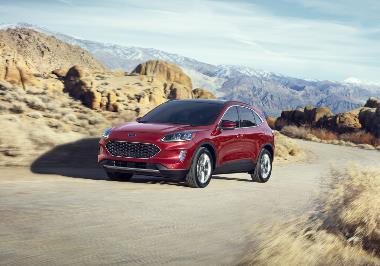
2020 Ford Escape: Sleeker, Sportier and Back to the Hybrid World
Tuesday, Apr 21, 2020
Once thought of as a “Baby Explorer” when it debuted in 2001, the Ford Escape made the small SUV segment its own, and soon developed its own follow …
Show MoreOnce thought of as a “Baby Explorer” when it debuted in 2001, the Ford Escape made the small SUV segment its own, and soon developed its own following, personality, utility, look and feel. The 13th top-selling vehicle in 2019, Escape is Ford’s No.2-best-selling vehicle, behind only the F-Series.
For 2020, Escape, has been redesigned for its fourth generation, and brings back a hybrid model, after a seven-year hiatus.
The 2020 Ford Escape is all-new with an aerodynamic design stemming from a sloped roofline, optimized liftgate spoiler and efficient underbody. Two hundred pounds lighter than the previous incarnation, due in part to the extensive use of high-strength, lightweight steel, Escape gains power, fuel efficiency and sportiness across all of its five trim levels. The 2020 edition offers four powertrains, including a standard hybrid and a plug-in variant, and introduces technologies ranging from drive modes and driver-assist features to electric vehicle ingenuity and on-board connectivity. Escape introduces new sliding second-row seats for 2020 that enable best-in-class second-row legroom and as much as 37.5 cubic feet of cargo space. And Ford’s smartest-ever small SUV features new selectable drive modes and Ford Co-Pilot360™ driver-assist technology. Available features include a 12.3-inch all-digital instrument cluster, a first-for-Ford in North America heads-up display and its first-in-class driver-assist features Active Park Assist 2.0 and Evasive Steering Assist.
The new Escape’s architecture goes for sportiness, borrowing its shield-shaped trapezoidal grille from a similar sixth-generation Mustang inspiration, while the lower front end pays homage to Ford GT. Compared to the previous model, the all-new Escape stands lower, wider and longer.
The 2020 Escape continues in its compact crossover footprint though this year’s generation gains 2.4 inches in length to 180.5. Escape measures 66.1 inches in height (0.2 inches lower) and 74.1 inches in width (a gain of 1.7 inches), on a 106.7-inch wheelbase – up 0.8 inches. Minimum running ground clearance is 7.9 inches and Escape has a curb weight range of 3298 lbs. to 3884 lbs. depending on trim and drive configuration.
Performance upgrades help make Escape a fun-to-drive sports-ute, with both its gas engine-powered models and the standard hybrid available with all-wheel drive. EcoBoost-equipped models get a new quick-shifting 8-speed automatic transmission for smooth, responsive shifting, while every Escape receives an all-new suspension and improved dynamics with a new isolated rear subframe.
Available in either Front-Wheel-Drive or Intelligent 4WD, Escape’s engine choices include the naturally aspirated 2.5-liter FHEV iVCT inline-4 engine that delivers 198hp and 170 lbs-ft of torque with sequential multiport electronic fuel injection and the 2.5-liter PHEV that gives you 209hp. The standard hybrid targets best-in-class EPA-estimated range of more than 550 miles and the plug-in hybrid targets a best-in-class EPA-estimated pure-electric range of 30-plus miles. For gas-engine devotees, a direct-injection 1.5-liter EcoBoost® I-4 with Auto Start-Stop returns, rated at 180hp, with 177-lbs-ft of torque and a EPA estimate of 26mpg/city, 31mpg/highway and 28mpg/combined. The other option, a turbocharged direct injection 2.0-liter Twin-Scroll EcoBoost® inline-4 with Auto Start-Stop also returns this year, supplying 250hp and 275 lbs-ft of torque on premium fuel, with EPA estimates of 22/28/24. I drove the 1.5-liter and averaged 28.6mpg in mixed-use tests. My weeklong test included some interstate trips, in-town maneuvers and one soft-road test, and I found the system to provide just enough power to pass when asked, and to conquer uphill grades sufficiently. A track test showed a steady 7.7-second zero-to-60mpg sprint and a 16-second-flat quarter-mile. My small SUV showed carlike steering, balance and an family driving and passenger experience.
Inside, the cabin is well-appointed with seating for five. Accommodations are tight for taller drivers, as headroom measures 40.0 inches in front and 39.3 in row two. Legroom can be stretched to a maximum of 42.4 inches in row one, while second-row passengers have 38.9 inches. Shoulder room is 57.6 in row one and 56.0 for row two, representing small gains in shoulder and legroom.
The 2020 Ford Escape is available in five trims. The S trim starts at $24,885 with the 1.5-liter I-4 EcoBoost® engine and Sync® with 4.2-inch LCD Screen Display; the SE that I tested, starts at $27,105 with the 1.5-liter EcoBoost® and adding SYNC® 3 with 8-inch LCD Screen Display, 10-Way Power Driver with Heated Front Row, Intelligent Access with Push Button Start and more; the SE Sport Hybrid starts at $28,265 with the 2.5L iVCT Atkinson Cycle I-4 Hybrid Engine and more; the SEL trim starts at $29,265 with the 1.5, reverse sensing and a power liftgate; and the Titanium trim started at $33,550 in FWD with the 2.5-liter Hybrid, 10-Speaker Audio System and more.
My Escape SE added Rapid Red exterior paint for $395. Upgrading from FWD to all-wheel-drive added $1500; Ford Co-Pilot Assist™ added $695 for Adaptive Cruise Control with Stop-and-Go, Voice-Activated Touchscreen Navigation System with Pinch-to-Zoom Capability, and SiriusXM Traffic and Travel Link®. Splash guards added $210; a Panoramic Vista Roof added $1495 and Destination Charges of $1245 plus an Acquisition fee of $645, put the sticker-as-tested at $33,390, but incentives of $1625 and other discounts are available, so check with your dealer.
> Visit www.CarlisleEvents.com for more on the automotive hobby.
Mike Blake, former editor of KIT CAR magazine, joined Carlisle Events as senior automotive journalist in 2004. He's been a "car guy" since the 1960s and has been writing professionally for about 30 years. </I>
-
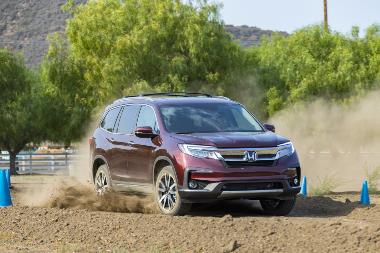
2020 Honda Pilot: Building on Last Year’s Refreshening with a New Cosmetic Trim
Tuesday, Apr 14, 2020
The public took to Honda’s Pilot when it was launched in 2002, as the first three-row, mainstream SUV to be developed on a car-like unit-body platf …
Show MoreThe public took to Honda’s Pilot when it was launched in 2002, as the first three-row, mainstream SUV to be developed on a car-like unit-body platform. That following has resulted in more than 2 million units sold since, and it remains a top-20 vehicle on the sales floor.
Pilot’s last full regeneration occurred for the 2016 model year, and after a mid-generation re-styling last year there are no major tweaks for 2020, with the exception of a new top-of-the-line Black Edition trim level based on the former top-tier trim, the Elite. The new Black Edition adds exclusive exterior and interior styling enhancements, and like the similar Honda Ridgeline Black Edition, the Pilot Black Edition comes exclusively in Crystal Black Pearl paint and includes Black Edition badges on the grille and tailgate, Black-painted 20-inch alloy wheels, and blackout treatments for the grille, headlight trim, side trim, door handles, window trim and fog light accents. Inside, there is red accent lighting for the dash, doors and center console, with red accent stitching on the front and second row captain's chairs, door panels and steering wheel. The Black Edition logo is embossed on front seats and floor mats, and the front and second-row seats get a red accent to the perforated-leather seating surface.
For the rest of the 2020 Pilot line-up, Honda has added Honda Sensing® as standard on all trim levels, along with available HondaLink with 4G LTE Wi-Fi, CabinTalk™ and CabinControl™ applications, and Honda i-VTM4® torque-vectoring all-wheel drive is now available on all trims.
However, the Black Edition isn’t the only loaded and trendy trim on tap. I tested the next line-topper, the Elite model, which was imbued with such accouterments as a Panoramic Sun Roof and such interior upgrades as heated second-row captain's chairs, heated and ventilated front seats, perforated leather front and second-row seats, heated steering wheel, 590-watt premium audio system with 10 speakers and Multi-Zone Audio, wireless phone charger, illuminated front- and second-row beverage holders and LED front-row map lights. Outside the Pilot Elite has automatic-dimming, power-folding side mirrors and standard Intelligent Variable Torque Management™ All-Wheel-Drive System. From a safety perspective the Pilot Elite comes with Honda Sensing®, a suite of safety and driver-assistive technologies designed to keep you out of bad situations by alerting you to things you might miss while driving. Honda Sensing® includes Road Departure Mitigation, Lane Keeping Assist System, Collision Mitigation Braking System and Adaptive Cruise Control.
Borrowing inspiration from Honda’s Odyssey minivan, Pilot comes at you with an aggressive grille featuring a bold interpretation of the Honda “flying wing” design, and sporty front fascia with standard LED low-beam headlights. The rear features wing-design taillights, and sculpted tail. The eight-person family utility vehicle is built with unit-body construction with slender, non-boxy lines and a powerful stance. The 2020 Pilot measures 196.5 inches in length; 78.6 inches in width; and a wind-wobbling 70.6 inches in height on a 111.0-inch wheelbase. Ground clearance is 7.3 inches, and curbweight ranges from 4036 lbs. to 4400 lbs. depending on trim and extras.
Inside, Pilot is filled with soft-touch materials throughout the cabin and tech runs supreme throughout with audio/connectivity and driver conveniences. The Pilot Elite cabin is accommodating, with headroom of 39.5 inches up front (some trim models reach 40.1 inches), 40.9 inches in row two and 38.9 in row three. Legroom is 40.9 inches in the front row, 38.4 inches in the middle row and a child-accommodating 31.9 inches in row three. Shoulder room comes in at a comfortable 62.0, 62.0 and 57.6.
The 2020 Pilot powers up with a 280hp, 262 lb-ft of torque 3.5-liter V6 engine. Depending on the trim model, it is mated either to a 6-speed automatic or 9-speed automatic transmission. My Pilot Elite was outfitted with a 9-speed and was EPA rated at 19 mpg/city, 26mpg/highway and 22mpg overall in AWD. My mixed-use tests showed an average of 21.3mpg.
Fit for soft-road conquering and in-town deftness, my Pilot reacted well on the highway, softened road irregularities and accelerated better than niche expectations with zero-to-60mph tests finished off in 6.6 seconds during a 15.3-second quarter-mile (hand-timed).
The 2020 Honda Pilot is available in six trims in both 2WD and AWD, with the AWD costing an additional $2,000, starting with the LX at $31,550 for 2WD; the EX at $34,430; and the EX-L at $37,860. All of those come with a 6-speed automatic transmission, while the following upper-tier Pilots are outfitted with a 9-speed auto-trans. The Touring trim starts at $43,715, the loaded Elite trim in AWD only, starts at $49,215 and the Honda Pilot Black Edition starts at $50,715 in AWD.
My test Pilot Elite in Deep Scarlet Pearl matched to a Beige Perforated Leather interior came with advanced Navi and rear entertainment system and 20-inch alloy wheels. We added Body side molding for $225, door edge guards for $105, door visors for $275, hood air deflector for $185, moonroof visor for $155, Premium running boards with lights for $725, perforated leather heated second row captain’s chairs for $300, and a splash guard set for $115. With destination and handling charges of $1120, my 2020 Honda Pilot Elite stickered at $51,125, but discounts may be available, so check with your local dealer.
> Visit www.CarlisleEvents.com for more on the automotive hobby.
Mike Blake, former editor of KIT CAR magazine, joined Carlisle Events as senior automotive journalist in 2004. He's been a "car guy" since the 1960s and has been writing professionally for about 30 years. </I>
-
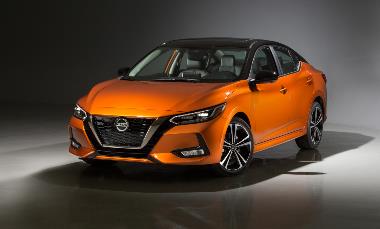
2020 Nissan Sentra: Bigger, Heavier, More Aerodynamic, Powerful and Luxurious
Tuesday, Apr 7, 2020
The Nissan Sentra was created with a name that evoked the image of a “Sentry”, to bring to mind a safe small vehicle. Beginning life for model-year …
Show MoreThe Nissan Sentra was created with a name that evoked the image of a “Sentry”, to bring to mind a safe small vehicle. Beginning life for model-year 1982 as a compact, it has since evolved into a mid-size. The sixth best-selling sedan in America this year, Sentra is all-new for 2020, beginning its eighth generation as a vehicle that is wider, longer and heavier than last year, but lower for better aerodynamics and stability. The new-gen Sentra has also gained 17 percent more horsepower and picks up a small bit of fuel efficiency.
Sitting on a new platform, the 2020 Nissan Sentra exterior is sportier and more muscular looking; it gains better road stability and driving dynamics through the redesign, new suspension and steering system; it adds a comprehensive suite of intelligent connectivity technologies, including available NissanConnect® featuring Apple CarPlay® and Android Auto™; adds as standard Nissan Safety Shield® 360 and available driver assist technologies; and the interior is redesigned with more modern, luxurious and premium accouterments.
Outside, Sentra’s new sculpted demeanor is more aggressive and sporty than is expected from a lower-priced sedan. The powerful stance and premium look are highlighted by Nissan's signature V-motion grille, available thin LED headlamps and floating roof. A lower rear roofline and wider shoulders, with wheels flush to the body, enhances its boldness. The Sentra SR trim I tested, provides a more athletic appearance with a sport-style rear spoiler, black-painted side mirrors with integrated turn signals, lower body side sill extensions, 18-inch diamond-cut aluminum-alloy wheels, and chrome exhaust finisher.
Once Sentra was a sub-compact, but it is firmly entrenched as a midsize now, weighing in with a curb weight of 3084 lbs. for my test Sentra SR – more than 100 lbs. heavier than last time -- and measuring 182.7 inches in length (up 0.6 inches), 71.5 inches in width (2.2 inches wider than last year) and 56.9 inches in height (an aerodynamic lowering of 2 inches) on a 106.8-inch wheelbase (0.5 inches greater), with a pavement-scraping minimum ground clearance of 4.9 inches.
The 2020 Sentra's all-new interior is more refined, more touch-oriented and more luxurious – above expectations in the compact sedan segment. Attention to detail and craftsmanship can be found throughout the interior, with satin chrome aluminum accents, the intuitive placement of controls, contrast seat stitching and a standard D-shaped steering wheel. Standard features include Nissan's Zero Gravity front seats, which help optimize posture positioning for enhanced comfort during long distance driving. Other interior features include remote keyless entry with push button start, RearView Monitor and Rear Door Alert.
With seating for five, Sentra offers a roomy 44.0 inches of front legroom (a gain of 1.5 inches) and a comfortable 37.4 inches of rear legroom. Headroom is cramped up front at 37.5 inches with sunroof (losing a half-inch over last year) and tight in the rear at 36.7 inches. Shoulder room exceeds niche expectations and gains 1.7 inches at 56.4 in row one and 54.5 for row two (up 0.6 inches).
Sentra's driving experience has also been upgraded. All 2020 Sentra models come equipped with the latest generation Xtronic transmission – no manual trans is offered. Sentra is now powered by a new, fuel-efficient 2.0-liter DOHC 4-cylinder engine delivering 149 horsepower and 146 lb-ft of torque – increases of 25 hp and 21 lb-ft over the previous model. Sentra's top-level driving dynamics are provided by a new independent rear suspension matched to a McPherson strut front suspension with twin-tube shock absorbers. Also new are a responsive dual-pinion rack electric power steering system and Nissan Intelligent Trace Control technology, both standard. With an EPA rating of 28mpg/city and 37mpg/highway, my week of mixed-use tests yielded an average of 32.3mpg.
Even with the power increase, Sentra still performs as one expects a compact to act. Passing at speed and accelerating uphill should be strategized, and at the track, Sentra improves a bit. The last last-gen Sentra I tested was slow, at a 9.6-second dash and 17.6-second quarter-mile. The new-Gen perked up to 9.2 and 17.2. Steering was predictable with lessened understeer.
Available in three trim levels, the base 2020 Sentra S starts at $19,090. The SV trim Sentra starts at $20,270, and added 16-inch Aluminum-alloy wheels, Nissan Intelligent Key® with Push Button Ignition, Premium Cloth seat trim, 7-inch Advanced Drive-Assist® Display, Apple CarPlay® integration and more. The premium The SR trim I tested comes with 18-inch Aluminum-alloy wheels, Dark chrome V-Motion grille, Chrome exhaust finisher and more, and starts at $21,430. My test SR, in Two-Tone Monarch Orange Metallic / Super Black exterior paint, for an extra $595, played off a Charcoal Sport Leatherette Interior as part of the $2170 SR Premium Package that was loaded with an Intelligent Around View® Monitor, Power sliding glass moonroof with tilt feature, auto-dimming inside rearview mirror, 6-way power adjustable driver's seat with 2-way power lumbar, sport leatherette-appointed seats with contrast orange stitching, heated front seats and more. A Clear rear bumper protector was installed for $75, and an impact sensor was added for $125 (alerts you to denting and attempted break-ins). With Destination and Handling charges of $925, my 2020 Nissan Sentra SR as tested stickered at $25,320.
> Visit www.CarlisleEvents.com for more on the automotive hobby.
Mike Blake, former editor of KIT CAR magazine, joined Carlisle Events as senior automotive journalist in 2004. He's been a "car guy" since the 1960s and has been writing professionally for about 30 years. </I>
-
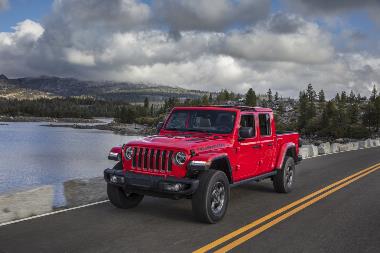
2020 Jeep Gladiator: It’s a Jeep…it’s a Truck…it’s Rugged and Sporty
Tuesday, Mar 31, 2020
Traditionally, there are few vehicles with the rugged and versatile history of Jeep. From its U.S. Army beginnings in 1941 as a general purpose 4-w …
Show MoreTraditionally, there are few vehicles with the rugged and versatile history of Jeep. From its U.S. Army beginnings in 1941 as a general purpose 4-wheel-drive light military vehicle, to its CJ Civilian Jeep production in 1945, to its evolution as a rugged, sports-utility vehicle with ever-progressing luxury, connectivity and capability, Jeep has earned a reputation as a tough, dependable and sporty conveyance for in-town and off-road function.
Building on that rich heritage, the all-new 2020 Jeep Gladiator combines Jeep’s iconic styling with the features of a pick-up truck to become a true sports-utility vehicle … a Jeep truck. Now, there WAS a full-size Jeep Gladiator truck from 1962-1988, known as the Jeep J-Series after 1971, but THIS Jeep Gladiator is a midsize pick-up truck that is brand new for the 2020 model year, and is Jeep’s first pick-up truck model since it discontinued Comanche in 1992.
The 2020 Jeep Gladiator certainly plays on Jeep’s iconic look and social distances itself from the competition with that look. And it is designed for work ... real truck work … and play … traditional Jeep play.
Based on the Jeep Wrangler SUV, Gladiator is recognizable as a Jeep, from the seven-slot grille seen on Wrangler, but with widened the grille slots for additional air intake to assist with the increased towing capacity. The top of the keystone-shaped grille is gently swept back to enhance aerodynamics. A full-sized spare tire, normally mounted on the Wrangler's rear tailgate, is mounted underneath the cargo bed of the Gladiator. The truck has front and rear doors that can be fully removed, as well as a windshield that can be lowered (like the Wrangler JL, Jeep includes a tool kit with the tools necessary to remove the doors and lower the windshield). Gladiator models equipped with LEDs feature daytime running lights, which form a halo around the outside perimeter of the headlights. Forward turn signals are positioned on the front of the trapezoidal wheel flares.
From behind, traditional square tail lamps feature available LED lighting and give way to a wide tailgate opening for unobstructed loading of cargo into the bed. The tailgate is damped and capable of stopping in three positions, while cargo is easily secured with a power-locking tailgate. And the truck bed isn’t just for looks. It is fully functional and work worthy. The 5-foot high-strength steel bed utilizes four steel cross-members to reinforce the load floor while the aluminum tailgate is damped. Utility and versatility are maximized with strong integrated tie-downs and under-rail bed lighting.
Built at Toledo Supplier Park, Toledo, Ohio the mid-size pick-up measures 218.0 inches long, 74.1 inches high with the hard top, and 73.8 inches wide on a 137.3-inch wheelbase, for a ground clearance of 11.1 inches. The Rubicon with an automatic transmission weighs in at a robust 5072 lbs.
Inside, the Gladiator combines Jeep style, versatility, comfort and intuitive feature use. Precision craftsmanship and high-quality materials are found throughout the cabin. The heritage-inspired center stack features a clean, sculpted form that complements the horizontal dashboard design. Soft-touch surfaces enhance tech items such as intuitive placement of climate and volume control knobs, media charging and connectivity ports, and Engine Stop. A U-Connect 4C Navigation system with 7.0-inch touchscreen is standard as is a push-button starter, featuring a weather-proof surround.
The cabin is niche-roomy, and provides 40.8 inches of front and rear row headroom in the hardtop, 41.2 inches of front legroom with 38.3 inches in row two, and 55.7 inches of front and rear shoulder room.
Gladiator is powered by a 3.6-liter Pentastar V-6 engine that delivers 285 horsepower and 260 lb-ft of torque. Combined with either a six-speed manual transmission or an optional eight-speed automatic transmission, the setup focuses on low-end torque – good for off-roading and hauling heavy loads – the automatic has a trailer tow rating of 7000 lbs. The system is rated at 17mpg/city, 22mpg/highway and 19 mpg/combined for the automatic. A 3.0-liter EcoDiesel V-6 engine is also an option, rated at 260 horsepower and 442 lb-ft. of torque. My 3.6 accelerated smoothly and predictably and finished off a hand-timed zero-to-60mph sprint in 8.2 seconds during a 16.2-second quarter-mile. A week of mixed-use tests and some off-road trails ended with an average consumption of 18.6mpg. I found Gladiator off-road capable, highway adequate and in-town cool and fun to drive.
The 2020 Jeep Gladiator is available in five trims, from the base Sport at $33,545 to the top-of-the-line Rubicon at $43,875. My fully loaded Rubicon in Firecracker Red added an 8-speed automatic transmission for $2000. Cosmetically, body-color fender flares were added for $495; a body-color three-piece removable hard top for $1100; spray-in bedliner for $495; Black leather-trimmed bucket seats for $1495; an Alpine Premium Audio system added $1295; all-weather slush mats added $165; hardtop headliner added $555; a trailer tow package was $350; the Jeep Active Safety Group (Blind-Spot and Cross-Path Detection, ParkSense® Rear Park-Assist System, LED Tail Lamps) was $995; and Adaptive Cruise Control/Forward Collision Warning added $795. Now, that was $12,035 in options, and with $1495 in destination charges, my 2020 Jeep Gladiator Rubicon stickered at $57,405.
> Visit www.CarlisleEvents.com for more on the automotive hobby.
Mike Blake, former editor of KIT CAR magazine, joined Carlisle Events as senior automotive journalist in 2004. He's been a "car guy" since the 1960s and has been writing professionally for about 30 years. </I>
-
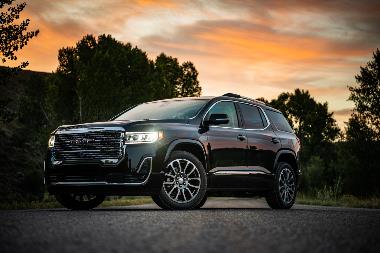
2020 GMC Acadia Denali: New Face, New Engine and Infotainment, Added Sophistication
Tuesday, Mar 24, 2020
Re-engineered in 2017 for its second generation, the 2020 GMC Acadia mid-size crossover gets a facelift, a turbo engine option and many tech and in …
Show MoreRe-engineered in 2017 for its second generation, the 2020 GMC Acadia mid-size crossover gets a facelift, a turbo engine option and many tech and infotainment upgrades.
Aiming for a more refined appearance, improved cabin interfaces and augmented power, GMC has upgraded Acadia with design and technology enhancements including a bolder exterior design, new available 2.0-liter turbocharged engine, new nine-speed automatic transmission, an enhanced GMC infotainment system, a new available Head-up Display and Rear Camera Mirror, and the introduction of the first-ever Acadia AT4 with exclusive AT4 grille, wheels, badging and black chrome exterior accents.
The 2020 Acadia comes at you with a new grille, new front and rear fascias and GMC’s signature C-shaped lighting along with standard LED lighting complemented with interior refinements.
Additional design and style enhancements for the 2020 Acadia include: new 18- and 20-inch wheel designs depending on the trim; outside mirrors with integrated LED turn signals (power-folding feature standard on Denali and available on SLT trim); hands-free power liftgate with GMC logo projection standard on SLT, AT4 and Denali; redesigned center console with enhanced storage space and unique Denali interior color scheme with new, open-pore wood decor.
Continuing with its mid-size crossover dimensions of last year, Acadia measures 193.6 inches long, 66 inches high and 75.4 inches wide on a 112.5-inch wheelbase. Ground clearance is 7.2 inches and curbweight comes in at about 3923, though the upscale versions with the 3.6-liter engine exceed 4000 pounds.
Last year, Acadia offered two engine choices: a 2.5-liter Inline-4 engine -- 193hp and 188 lb-ft of torque and an EPA rating of 21/city and 26/highway – and a 3.6-liter V-6 engine -- 310 hp and 271 lb-ft of torque, for an EPA rating of 18/city and 25/highway. This year, Acadia goes with three options: a 2.0-liter turbo I-4 DOHC with direct injection and Active Fuel Management, good for 230 horses and 258 lb-ft; the 2.5-liter direct-injection I-4 that provides last year’s power numbers; and this year’s 3.6-liter V-6 DOHC VVT with Direct Injection is the same as last year’s at 310hp and 271 lb-ft.
Mated to the new nine-speed automatic Electronic Precision Shift that replaced the previous six-speed automatic, my 3.6-powered Denali was attentive, responsive and confident with reduced engine noise in the cabin. My week of mixed-use tests yielded an average of 22.2 mpg, Accelerating powerfully at speed and in passing, track tests showed an energetic zero-to-60 mph sprint in 6.6 seconds, en route to a consistent 15.2-second quarter-mile.
Responsive and accurate on turns and sweeps, Acadia’s electric variable-effort power steering with Active Return Assist was reliable and minimized body roll while delivering acceptable understeer during quick cornering. Providing good road feel, the MacPherson strut front suspension with direct-acting stabilizer bar and the five-link independent rear with coil springs and stabilizer bar were the same as last year, and with the Continuous Damping Control real-time damping on my Denali test ride, the system leveled city roads and highways, and was solid soft-road, though severe off-roading seemed to be a bit beyond its capabilities.
Refined inside, the Acadia cabin provides seating for five, six, or seven passengers depending on model and configuration. My three-row, six-passenger Denali was comfortable with 40.0 inches of front headroom without a sunroof (you lose about 1.2 inches with a sunroof), 39.6 in row two and 37.2 inches in row three. Legroom measures 41 inches in front, 39.7 in row two and a child-worthy 29.7 in row three, while shoulder room is 59.4, 58.7 and 54.3. Cargo volume was 41.7 cu.ft. behind row two if row three is eliminated.
Safety features include standard head curtain side air bags with rollover protection for all seating rows and roof-mounted head curtain air bags, Front and Rear Parking Assist, Lane Change Alert, Front Pedestrian Braking, Low Speed Forward Automatic Braking, Forward Automatic Braking, Following Distance Indicator, IntelliBeam automatic headlamp high-beam control, Surround Vision camera system, Forward Collision Alert and more.
Available in six trims, Acadia’s base SL trim starts at $30,195 in FWD and runs through six levels to get to the top-of-the-line Denali that I tested – starting at $46,695 in FWD. In the lesser trims, you pay about $1095 for the upgrade to the larger engine – Denali comes with the larger plant as standard. You also pay $2000 to upgrade from FWD to AWD and my Denali was in AWD. Ebony Twilight Metallic exterior paint added $495 and the outside was mated to a Jet Black perforated leather interior. The Technology Package that is recommended for the safety conscious was also included for $1495, consisting of advanced adaptive cruise control with full speed front automatic braking and a surround vision system. A Dual SkyScape 2-Panel Powered sunroof was added for $1400; Front and rear splash guards added $170 and roof rack cross rail added $265. Rear seat infotainment with DVD player would have added $1995, but my ride was without that option, though we did add Wireless charging for $375. With an additional $1195 for Destination charges, my final sticker-as-tested was at $52,895, but cash allowance incentives of $4250 brought the MSRP to $48,645, so check with your local dealer.
<I> Visit www.CarlisleEvents.com for more on the automotive hobby.
Mike Blake, former editor of KIT CAR magazine, joined Carlisle Events as senior automotive journalist in 2004. He's been a "car guy" since the 1960s and has been writing professionally for about 30 years. </I>
-
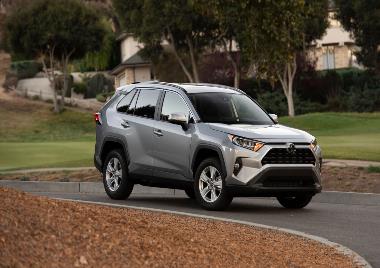
2020 Toyota RAV4: Gaining Off-Road Cred and Advances in Tech and Suspension
Tuesday, Mar 17, 2020
The top-selling non-truck in America, and No. 4-selling vehicle overall is Toyota’s RAV4 with nearly 450,000 units sold in 2019. RAV4 launched in t …
Show MoreThe top-selling non-truck in America, and No. 4-selling vehicle overall is Toyota’s RAV4 with nearly 450,000 units sold in 2019. RAV4 launched in the United States 23 years ago, creating a niche that became the compact crossover SUV segment. It has always been hip, trendy and sporty, and was named for being a “Recreational Active Vehicle with 4-wheel drive” (RAV4), although not all RAV4s have four-wheel drive.
Remaining true to its roots, the fifth-generation RAV4 was fully redesigned last year and receives minimum tweaks this year. The major upgrade for 2020 is the introduction of RAV4’s TRD Off-Road model. One negative for 23 years was that RAV4 was soft-road, but that all changes with the new TRD Off-Road version, and its tough Off-Road suspension kit with red coil springs, TRD’s unique 18-inch wheels, all-terrain tires and TRD badges inside and out.
Also new for 2020, all RAV4 models expand multimedia capability with Android Auto™ added to the Apple CarPlay® and Amazon Alexa compatibility. The LE and XLE grades, both gas and Hybrid, gain standard SiriusXM® with a three-month trial, which was already standard on the higher grades. There are also multimedia enhancements, an augmented weather package on the XLE trim and full leather inside the Adventure model. A Hybrid is available and a plug-in Hybrid is set to be added for 2021.
Toyota’s Global Architecture platform forms a solid foundation and good driving dynamics, comfort, and safety. RAV4’s chiseled good looks combine sportiness, style and athleticism and a demeanor that tackles urban, suburban and outdoor adventures with equal aplomb. RAV4 accomplishes this in compact dimensions of 180.9 inches long, 73.0 inches wide and 67.2 inches high, on a 105.9-inch wheelbase. Ground clearance is 8.4 inches to 8.6 depending on trim, and RAV4 weighs in at a range of 3380 to 3655 pounds depending on trim.
RAV4 retains its efficient 2.5-liter Dynamic Force 4-cylinder engine that delivers 203 hp and 184 lb-ft of torque, for a sufficiently steady, but not overpowering amount of muscle. The AWD versions are rated, depending on trim and extras, at 27mpg/city and up to 35mpg/hwy, with some estimated at 33mpg. The RAV4 Hybrid is also powered by a 2.5, assisted with an electric motor on the rear axle. The combined system output is 219 hp, and 400 lb-ft, and backed by an electronically controlled continuously variable transmission, is EPA-rated at 41/38 with a combined average of 40mpg. My naturally aspirated test ride averaged 29.2mpg in mixed-use driving in town, on the highway and some soft-road fun. The Independent MacPherson front struts with stabilizer bar and multi-link rear suspension with stabilizer bar levels most pavement irregularities and soft-roaded adequately.
Response from the Electric Power Steering (EPS); electric power-assisted rack-and-pinion set-up was attentive for the niche, with acceptable understeer, rear sway and minor top-wobble in tight turns.
RAV4 is not a speed deliverer, but at the track, my RAV4 shaved a tenth off last year’s 8-second-flat zero-to-60 run at 7.9 seconds, and finished a 16.1-second quarter-mile.
With seating for five, The RAV4 cabin is quiet and sporty, and my Limited trim was luxurious and filled with connectivity, tech, and featured a front-row moonroof, heated 8-way power-adjustable driver’s seat with memory, 2-way lumbar support, and 7-inch Multi-Information Display.
Front headroom is a bit tight, but expected for the niche, at 37.7 inches, with 39.5 in row two. Legroom is accommodating at 41.0 inches in row one, with 37.8 inches for second-seat passengers and there is a wide-body 57.8 inches of shoulder room in front and 56.4 inches in row two.
From a safety perspective, RAV4 is on point with the Toyota Safety Sense™ 2.0 Pre-Collision System with Pedestrian Detection, which includes, as expected, pedestrian detection, along with Lane Departure Alert with Steering Assist, Full-Speed Range Dynamic Radar Cruise Control, Road Sign Assist, Lane Tracing Assist and Steering Assist. RAV4 also has Star Safety System™ with Traction Control, Electronic Brake-force Distribution, Enhanced Vehicle Stability Control, Brake Assist, Anti-lock Braking System and Smart Stop Technology. Eight standard airbags consist of dual stage advanced driver and front passenger airbags; front seat-mounted side airbags; first and second row side curtain airbags; driver’s knee airbag and a front passenger seat cushion airbag.
The base 2020 RAV4 Hybrid starts at $27,850 plus a delivery fee of $1120, and gas-only models start with the 2020 RAV4 LE basing at $25,950, the XLE at $27,245, the XLE Premium at $29,950, the sporty Adventure at $33,055, the Limited at $34,480, loaded with standard tech, safety and cosmetics, and the new TRD Off-Road at $35,280. My test RAV4 Limited in Silver Sky Metallic exterior paint mated to a Black Softex interior, added Dynamic Torque Vectoring AWD for $1400; the Limited Grade Advanced Technology Package added Smart Key system, hands-free power liftgate with jam protection, Bird’s Eye View camera with Perimeter Scan, overhead 360-degree view and curb view, wireless Smartphone charging and more, for $1025; Bodyside moldings for $209; mudguards added $129; a running board added $549; roof rack cross bars added $315; and delivery, processing and handling added $1120 for a sticker-as-tested of $39,326.
> Visit www.CarlisleEvents.com for more on the automotive hobby.
Mike Blake, former editor of KIT CAR magazine, joined Carlisle Events as senior automotive journalist in 2004. He's been a "car guy" since the 1960s and has been writing professionally for about 30 years. </I>
-
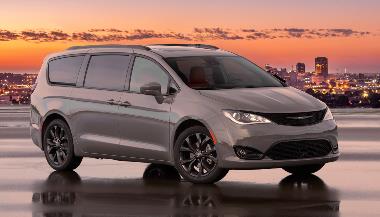
2020 Chrysler Pacifica: Family Luxury and Fully Loaded for Multipurpose
Tuesday, Mar 10, 2020
Chrysler discontinued its Town and Country minivan and replaced it with Pacifica for the 2016 model year and more than 400,000 have been sold in Am …
Show MoreChrysler discontinued its Town and Country minivan and replaced it with Pacifica for the 2016 model year and more than 400,000 have been sold in America since its launch, among the tops in sales during that timeframe. Classified as a multipurpose vehicle, built in Windsor, Ontario, Canada, this year’s version is available in eight trims and a hybrid model, and has discontinued the low-end “L” and “LX” models that are now sold under the Voyager nameplate.
Pacifica will fully refresh in 2021 … but this year the line-up adds a long list of available cosmetics, mechanical upgrades and optional exterior add-ons, and a Red S Edition package as a new option for Limited models … Red S doesn’t mean Red exterior, it means fully loaded with a black and red interior, and it is the trim I tested.
While I tested the fuel-only version, Chrysler also offers the Pacifica Hybrid, America’s first and only hybrid minivan. It is the fourth best-selling plug-in hybrid vehicle (PHEV) from the 30 PHEVs available in the market, and the top seller among the 20 vehicles that offer PHEV as an option. Pacifica Hybrid achieves more than 80 miles per gallon equivalent (MPGe) in electric-only mode, has an all-electric range of more than 30 miles and a total range of more than 500 miles.
Back to the gas-only version, Pacifica rides with more than 100 available safety and security features, the Uconnect® Theater rear-seat entertainment system, exclusive Stow ‘n Go seating and storage, available 4G Wi-Fi and an array of comfort and convenience technologies, making it tailored to fit a family lifestyle.
My Red S edition was inspired by the popular blacked-out look of the S Appearance Package on other Pacifica trims. The trim features a striking, class-exclusive interior with Rodèo Red Nappa leather seats with Light Diesel Grey stitching and piping, Silver Metal Brush hydro bezels on instrument panel and door trim, Red S liftgate badge and Black Noise Chrysler wing badges with Velvet Red insert and Gloss Black exterior finishes, 20-inch wheels (18-inch on Pacifica Hybrid) with a Black Noise finish, Advanced SafetyTec, 20-speaker Harman Kardon premium audio, KeySense, and more.
Honored for the fourth consecutive year by The Car Connection as the “Best Minivan to Buy,” and earning a Consumer Guide “Best Buy” badge, the 2020 Chrysler Pacifica employs steel unibody construction, with hinged front doors; aluminum-skinned sliding left- and right-side doors and a magnesium-structured/aluminum-skinned rear liftgate with gas props.
Pacifica’s 121.6-inch wheelbase platforms a 37.8-inch front overhang and 44.3-inch rear overhang as part of its 203.8-inch length, 79.6-inch width and 69.9-inch height. Its curbweight is 4330 lbs in a 55/45 front/rear weight distribution.
Inside, Pacifica is comfortable, quiet for the niche and my Red S trim was luxurious and packed with an infotainment system with Apple CarPlay and Android Auto, a power liftgate, power sliding doors, 3-zone automatic climate control, second-row underfloor storage, an 8-way power driver seat, and keyless access and start.
Roomy as advertised Pacifica offers front headroom of 40.1 inches; row two provides 39.6 inches and third row seats afford 38.7 inches. Legroom is accommodating at 41.1 up front, 39.0 in row two with minimum knee clearance of 4.8, and 36.5 in row three with 3.5 inches of knee clearance. Shoulder room is a spacious 63.8, 63.0 and 61.2 and behind the third row of seats, Pacifica has 32.3 cubic feet of space. Fold the third row flat, and you get 87.5 cubic feet.
Pacifica power comes from a 3.6-liter Pentastar V-6 engine that puts out 287 hp and 262 lb-ft of torque and is mated to a nine-speed FWD, electronically controlled automatic overdrive transmission with torque converter clutch. EPA rated at 19/28/22, I got 31mpg on the highway and averaged 23.3mpg for a week.
On the track and from a stop, Pacifica isn’t quick, but it is predictable and steady. I achieved a 7.3-second zero-to-60mph run and a 15.8-second quarter-mile.
Smooth-riding, Pacifica’s independent MacPherson strut front suspension with coil over gas-charged shock absorbers, stabilizer bar with hydroformed steel perimeter cradle, works well with an Independent twist-blade rear suspension with coil springs, twin-tube shock absorbers with integrated rebound springs to react well and family-soft for passengers, and the electric rack and pinion steering provide niche-good road feel and dynamics.
The 2020 Chrysler Pacifica is available in eight trims, from the $33,745 Touring through the $48,690 Red S Edition. The Pacifica Hybrid Touring starts at $39,995 and cash discounts and a potential federal tax credit of up to $7500 may be available. My test ride was the top-of-the-line 2020 Pacifica Red S, in Ceramic Gray Exterior Paint with Red Nappa Leather bucket seats, an S logo and Uconnect® 4 Nav with a 8.4-inch display. Splashguards added $150 and eight-passenger seating with a dual-pane Panoramic Sunroof added $495. An interior entertainment package could have added another $1995, but my test ride was delivered without those upgrades. Destination charges added $1495, and three cash discounts totaling $3500 put my MSRP at $46,835, so check with your local dealer for available discounts.
> Visit www.CarlisleEvents.com for more on the automotive hobby.
Mike Blake, former editor of KIT CAR magazine, joined Carlisle Events as senior automotive journalist in 2004. He's been a "car guy" since the 1960s and has been writing professionally for about 30 years.
-
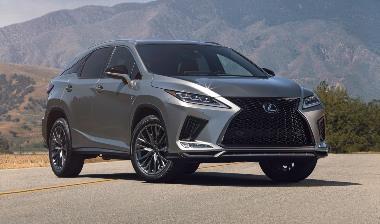
2020 Lexus RX350: Luxury Midsize SUV Refreshes Styling and Connectivity
Tuesday, Mar 3, 2020
The Lexus RX came to life as a compact luxury SUV in 1998, and four generations of the soft-roader have seen it grow to mid-size status, gaining fo …
Show MoreThe Lexus RX came to life as a compact luxury SUV in 1998, and four generations of the soft-roader have seen it grow to mid-size status, gaining followers for its versatility and luxury sedan-like comfort, raising it to a No.1-sales ranking in the luxury SUV niche.
The current (fourth) generation started for the 2016 model year, and Lexus RX has undergone a re freshening for 2020 starting with new exterior styling and technology applications including Android Auto integration in addition to in-car connected technology applications from Apple CarPlay® and Amazon. Additionally the 2020 RX employs enhanced driving dynamics, improved steering response for smoother ride, has revised front and rear styling, enhanced handling and increased available safety features.
The 2020 Lexus RX350 comes in FWD, AWD, five-passenger or seven-passenger configuration and also in a Sport trim, and the 450h version is a gas-electric Hybrid available in 4WD in five- or seven-passenger styles. I tested the RX350 and it was loaded to overflowing with tech, convenience connectivity and safety items.
Reinvigorated and refined for 2020, Lexus RX 350 comes at you with its signature grille, and an elaborate look based on an L-motif. Each individual block has a different shape and angle to create a varying form that balances a strong yet elegant image. The hand-drawn angles of the grille surround are also echoed at each corner of the bumper to smooth the visual flow. The luxury crossover receives several changes designed to enhance the driving dynamics across the lineup. Both the front and rear stabilizer bars are now hollow to reduce weight, yet their thicker diameters and reinforced bushings help reduce body roll and improve steering response. The shock absorbers have been re-tuned to work with the stiffer roll bars, while upgraded dampers feature a new friction control device that helps to control high frequency vibrations for a smoother ride.
The elegantly sculpted 4387-lb. (for the AWD) RX350 is constructed of unitized steel and aluminum, and measures 192.5 inches long, 74.6 inches wide and 67.7 inches high on a 109.8-inch wheelbase. Ground clearance is 8.2 inches and maximum towing capacity is 3500 lbs.
The RX350’s power set-up remains as it was last year -- a Sequential Multiport Fuel Injection 3.5-liter V-6 aluminum block engine, coupled with an 8-speed Automatic Electronically Controlled Transmission. The system is rated at 295 hp and 267 lbs.-ft. of torque, and the transmission, with “intelligence”, accelerates in car-like fashion. Behind the wheel and in the seats, RX350 smoothly glides uphill and in passing maneuvers. Responding well from a stop, my test RX350 completed a zero-to-60mph run in 7.9 seconds during a 16.2-second quarter-mile. EPA rated at 19mpg/city, 26mpg/highway and 22mpg/overall for the AWD configuration, my test RX350 averaged 22.3mpg in mixed-use tests.
The refined 2020 Lexus RX suspension design and newly added active corner braking helps prevent understeering by braking the inner wheel and providing more stability to the vehicle handling. Additional rigidity was achieved through additional spot welds and adhesive. The RX 350’s electric power rack and pinion steering with electronic power assist was often vague, but acceptable. Inside, for driver and passengers, the experience was as smooth as one would expect in a luxury vehicle. The all-wheel-drive set-up worked as expected and the MacPherson strut front suspension with coil springs and the rear double wishbone, smoothed out most road irregularities.
The cabin is generously packed with intuitive, luxurious and high-tech conveniences. With seating for 5, interior dimensions are comfortable at 39.4 inches up front and 39.1 in the rear; legroom is 44.1 inches in row one and 38.0 inches in row two; and shoulder room is 57.8 and 57.6.
Abundant safety items include Lexus Enform Safety Connect, Lexus Safety System+ 2.0, a Backup Camera and 10-Airbag System.
The base 2020 Lexus RX 350 starts at $44,150 in front-wheel drive and $45,550 in all-wheel drive. The seven-passenger 350L is priced at $47,300 for FWD and $48,700 for AWD; the dynamic sport-tuned RX 350F Sport starts at $47,950 (FWD) and $49,350 (AWD). If you go up to the 450h (gas-electric Hybrid) in AWD, pricing starts at $46,800, with $50,600 for the 450h Sport and $50,510 for the 450hL.
My all-wheel-drive test RX 350 AWD in Atomic Silver with a Parchment NuLuxe® and Striated Black trim interior. A power moonroof with roof rails was added for $1350. The $3365 Navigation/Mark Levinson® Package was added with a 15-speaker Mark Levinson Premium Surround Sound Audio System, Navigation System, 12.3-inch color multimedia display, in-dash DVD/CD player, Lexus Enform App Suite, remote touch and climate control smog sensor; the Premium Package was added for $800, with Matte Walnut interior wood trim, power-folding, auto-dimming outside mirrors and the Lexus Memory System. A color Heads up display cost $600; heated and ventilated front seats were $640; a heated leather–trimmed steering wheel was $150; a power rear door kick sensor was $150; a panoramic blind-spot monitor with rear-cross-traffic and braking was added for $1865. Mud guards were $155; door edge guards were $140; and running boards were $640. With the delivery and processing fee of $1025, my test 2020 all-wheel-drive Lexus RX350 stickered at $56,430.
> Visit www.CarlisleEvents.com for more on the automotive hobby.
Mike Blake, former editor of KIT CAR magazine, joined Carlisle Events as senior automotive journalist in 2004. He's been a "car guy" since the 1960s and has been writing professionally for about 30 years. </I>
-
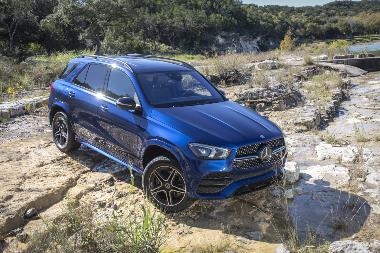
2020 Mercedes-Benz GLE350 4Matic: Nothing Entry-level About this Entry-luxury SUV
Tuesday, Feb 25, 2020
The Mercedes-Benz GLE class of mid-size SUVs is considered by some to be an entry-level M-B or an entry-luxury SUV. But there’s nothing entry level …
Show MoreThe Mercedes-Benz GLE class of mid-size SUVs is considered by some to be an entry-level M-B or an entry-luxury SUV. But there’s nothing entry level about it, from its attributes to its price. All-new for 2020, the GLE-Class is in its second generation as a GLE, but it is starting its 4th-Gen as a vehicle, when including its life in the M-Class, that was its predecessor in the Mercedes-Benz Line-up. The GLE-Class designation has been used since 2015, when the M-Class was face-lifted and renamed.
For 2020, the GLE, with set-ups as a 350 or 450, depending on engine size, has been fully redesigned, and in 350, can be purchased in rear-wheel drive or all-wheel-drive. The 450 4MATICS are all-wheel drive. This new generation of the Mercedes-Benz GLE has been tweaked with high-tech innovations including an intelligent suspension that makes the SUV more comfortable on the road while improving handling, an intuitive connectivity system with crystal-clear graphics, and an extensive list of advanced safety features
Available with a string of options that escalate the vehicle price quickly, the basic Mercedes-Benz GLE 350 4MATIC I tested was luxuriously loaded like no entry level vehicle. Key standard features include such exterior enhancements as a power liftgate, hands-free access, SmartKey with Keyless-Start, Remote Start via “Mercedes me” Mobile App, Keyless-Go and LED headlamps and taillamps. Standard interior accouterments include power front seats with driver-seat memory, heated front seats, dual-zone automatic climate control, power tilt/sliding sunroof, double sun visors, steering-wheel Touch Control buttons, power tilt/telescoping steering column, power-folding side mirrors, retractable luggage cover, touchpad controller, 12.3-inch touchscreen multimedia display, 12.3-inch digital instrument cluster display, MB Navigation, Voice Control with Natural Language Understanding, hands-free Bluetooth interface, Apple CarPlay, Android Auto, rearview camera and such safety items as nine air bags and Active Parking Assist.
The GLE350 takes on a new look in 2020 with a 3.2-inch longer wheelbase with shorter overhangs at the front and rear. Aerodynamically designed, GLE shows off a bold stance, front hood character lines, distinctive grille, sculpted sides and rear, and curves all around. On a wheelbase of 117.9 inches, the GLE 350 is 194.3 inches long, 76.7 inches wide and 70.7 inches high, with a curbweight of 4696 lbs.
The GLE 350 cabin is an environment of pampering, intuitiveness, tech and comfort. The panoramic sunroof has been made 50-percent larger, sightlines are good, and during all of my tests, the driver-passenger’s home was quiet. Tech abounds and fit and finish are certainly above entry-luxury status. Leather seats are padded well, and in an “Alexa” or “Siri” environment, if you say, “Hey, Mercedes,” the system will respond to you and ask how she can help.
Inside, you get small SUV accommodations of 40.5 inches of front row headroom with 39.6 inches in row two; legroom is 40.3 inches up front and 40.9 in the second row; and shoulder room goes a widebody 59.3 in the first row and 58.3 for the rear seats.
The GLE 350 offerings employ a 2.0-liter inline-4 turbo that puts out 255hp and 273 lb-ft of torque, and the powerful 450 4MATIC uses a 3.0-liter inline-6 turbo with EQ Boost to provide 362hp and 369 lb-ft. The EQ Boost can add up to 21hp to the 450 4MATIC. The smaller engine in 4MATIC is EPA rated at 19 / 26 / 22, and my week of testing came in at an average of 20.6mpg.
On the road and at the track, the 2.0-liter performed well, with enough power to pass at speed. I would have like to have tried the 3.0-liter turbo, but my 2-liter accelerated with energy. Mercedes claims a 7.1-second zero-to-60mph sprint, but my test vehicle beat that with a 6.9-second dash, en route to a 15.4-second quarter-mile.
Performing in quick turns and gentle glides, GLE 350’s speed-dependent, electro-mechanical rack-and-pinion steering is vague at times, but is predictable enough for the niche. The all-new E-Active Body Control intelligent electric suspension has a double wishbone front suspension with coil springs, single tube gas-pressure and tubular torsion bar that works well with the independent, multi-link rear suspension with coil springs, double-tube gas-pressure and tubular torsion bar to level out most road irregularities and provide a smooth, but not luxury ride, and the GLE stays stable and flat while cornering. M-B’s Active Body Control virtually eliminates body roll, stabilizing the chassis in a way that exceeds conventional suspension systems.
Mercedes-Benz pays attention to safety with a long list of safety features including stop-and-go assist, steering assist, blind spot warnings, active braking assist and lane change assist, as well as a full complement of airbags, braking and lane-keeping technology.
The 2020 Mercedes-Benz GLE 350 starts at $54,250; the 350 4MATIC bases at $56,750 and the GLE450 4MATIC starts at $61,750. My test 350 4MATIC upgraded with Brilliant Blue Metallic exterior paint for $720; a Panorama roof added $1000; a roof spoiler was $600; a rear load sill guard was $150. Inside, a heated steering wheel added $250; 4-zone climate control was $760; MBUX Augmented Video for Navigation added $300 and front passenger seat memory added $350. That put the sticker at $60,730.
> Visit www.CarlisleEvents.com for more on the automotive hobby.
Mike Blake, former editor of KIT CAR magazine, joined Carlisle Events as senior automotive journalist in 2004. He's been a "car guy" since the 1960s and has been writing professionally for about 30 years. </I>
-
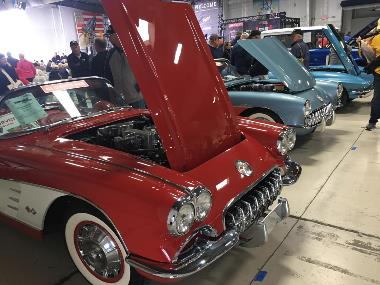
Carlisle Auctions Tops Sales Records as Part of Winter AutoFest 2020
Monday, Feb 24, 2020
When 100 years of automotive production mixes with a passionate group of would be buyers, the results translate to a supe …
Show MoreWhen 100 years of automotive production mixes with a passionate group of would be buyers, the results translate to a super successful auction for Carlisle Auctions. Presenting its first event of the 2020 season, Carlisle Auctions called Lakeland, Florida and Winter AutoFest home for two days, moving 400+ consignments in front of a packed hanger on the spacious SUN n’ FUN Expo Campus.
Frequently, an auction is highlighted by a car or cars with a great supporting cast helping draw bidders. For this auction, there were more than a few that helped draw an impressive bidder turnout for the Winter AutoFest auction. Those cars, a 2005 Ford GT, a 1978 Corvette, 80s’ era trucks, some daily drivers and a bunch more current and future classics teamed with more than 40 Corvettes to draw nearly $4 million in total sales.
The best-ever Winter AutoFest auction saw a 2005 Ford GT come in as the top seller. This gem garnered $256,800, while a ’67 Corvette, ’73 Pantera DeTomaso, ’57 Chevy Belair and ’33 Ford Woody Wagon rounded out the top five. The Corvette sold for $175,000, the Pantera went for $105,000, the Bel Air sold for $77,575 and the Woody moved for $68,250. In total, the top five tallied $682,625. All dollars mentioned include applicable fees.
In addition to the aforementioned heavy hitters, there were 19 Corvettes that went home with new owners. This made the all-Corvette hour an all-around hit with bidders and consignors alike, while also complimenting the Corvette Fun Field that sat just yards away as part of Winter AutoFest. Between the 40+ auction Corvettes and the more than 250 on display, Corvette lovers had something to talk about all day, every day.
“We’ve been coming to Lakeland and hosting an auction here since 2015,” noted Director of Auction Operations Tony Cline. “By far, this was our best-ever Lakeland auction. From the quality and variety of consignments to the energetic bidder turnout, we are very pleased with how this auction turned out,” continued Cline. “Not only are we looking forward to returning to Lakeland in 2021, but we’re excited to return to Sarasota, Florida on November 13-14 for our Sunset-Carlisle collector car auctionz.”
Complete results for the 2020 Winter AutoFest auction are available online now as are select “still for sale” consignments that did not sell in Lakeland. Further, www.CarlisleAuctions.com also hosts details about the four remaining auctions on the Carlisle Auctions schedule. The next auction is scheduled for April 23-24 in Carlisle, Pennsylvania as part of Spring Carlisle. Call 717-960-6400 or visit Carlisle Auctions on the web today to learn more.
-
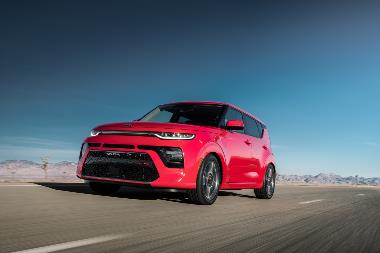
2020 Kia Soul GT-Line: All-New Subcompact Urban Vehicle is Larger, Teched-up, More Powerful and Stylishly Hip
Tuesday, Feb 18, 2020
In 2005, Kia’s Irvine, California-based design team designed a 5-seat hatchback aimed at hip urban youths. They came up with a vehicle that was con …
Show MoreIn 2005, Kia’s Irvine, California-based design team designed a 5-seat hatchback aimed at hip urban youths. They came up with a vehicle that was considered an economy runabout sport wagon, when it was launched, four years later. Since entering the “hip hatchback” marketplace in 2009, the Kia Soul has resonated with consumers and has earned a solid following in the compact multi-purpose vehicle segment, and along the way it has grown in size, power, sophistication and functionality, while retaining its hipness.
The third-generation 2020 Kia Soul is fully redesigned, with a revamped exterior, a more powerful powertrain and an upgraded cabin. While retaining some of Soul’s heritage boxiness and confident stance, the exterior is punctuated with innovative line sculpture, precise details and technical lighting elements to appeal to its main youthful and trend-setting audience. New exterior design highlights include high-tech front headlight configuration with connecting trim piece; slim-design daytime running lights and turn signal indicators; a larger front grille with unique two-tone treatment; three-dimensional wraparound boomerang-shaped taillights; C-pillars designed to resemble airplane wings and distinctive C-pillar garnish that features a new “Soul” graphic.
Cabin improvements include available sound mood lighting that emits soft light from the center door panels, and an exclusive 3D pattern surface on the upper door panels, with the ability to synchronize to the beat of the music playing through the Soul’s audio system. Sound mood lighting features a rainbow of customizable colors.
And Soul power has been upgraded for 2020 to include a 201-hp 1.6-liter twin-scroll turbocharged I-4 GDI engine.
My test 2020 Soul in GT-Line Turbo trim came loaded with such exterior enhancements as 18-inch alloy wheels, 235/45 R18 tires, Chrome-tipped center exhaust, GT-Line exterior appearance, high gloss black outside power-adjustable mirrors, LED front fog lights and headlights, LED rear tail lights and center high mounted stop light, mirror-mounted LED turn-signal indicators, and a power sunroof with manual sunshade. Also packed inside, the Soul GT-Line cabin included a Harman Kardon® Audio System with center speaker, subwoofer and external amplifier; Head-Up Display; heated D-shaped leather steering wheel; LED interior lighting; Satin Chrome interior door handles; power windows with driver one-touch auto-Up/Down; smart cruise control and speaker lights with multiple ambience themes. Standard safety upgrades in the GT-Line trim included Forward Collision Avoidance-Assist with Pedestrian Detection and High Line Tire-Pressure Monitoring System.
The redesign has grown Soul to a 102.4-inch wheelbase, a gain of 1.2 inches. Its length is now 165.2 inches long, up 2.2 inches, whiles its width and height remain the same as the previous generation, at 70.9 inches wide and 63.0 inches high. Ground clearance is up 0.8 inches at 6.7 inches, and curbweight is now over 3000 lbs., a significant gain of more than 200 pounds since I last drove a Soul -- model year 2014.
Inside, while I found Soul’s cabin noisy at high speed from wind and tire clatter, the compartment is still hip, intuitive and high-tech, though the all-new Soul has lost some headroom, at 39.4 inches up front – a loss of 0.2 inches – with the same second row headroom – 39.5 inches – as last year. Legroom gains 0.2 inches in row one, at 41.1 inches, while row two loses 0.3 inches of legroom to 38.8 inches. Shoulder room remains unchanged at 55.5 inches in front and 54.7 inches in the rear. Cargo capacity gains 5 cubic feet, to 23.8 cu.ft.
Powerwise, Soul offers two engine choices– one naturally-aspirated and one turbo. The 2.0-liter Nu four-cylinder engine mated to either a 6-speed manual transmission or Intelligent Variable Transmission delivers 147 hp and 132 lb-ft of torque … a gain of 9 horses over the last Soul I-4 I drove in 2013. But the more fun drive comes with the 1.6-liter twin-scroll turbocharged I-4 GDI engine with a 7-speed dual-clutch transmission, This system puts out 201 hp and 195 lb-ft of torque. Economically, the 2.0 automatic is rated at 27mpg/city, 33mpg/highway and 30mpg/combined; and the 1.6 turbo is rated at 27/city, 32/highway and 29/overall. My week-long test garnered a 28.8mpg average.
Fun to drive, Soul’s turbo engages and is gentle on cruises, and while the independent front suspension with MacPherson strut and Retainer-type sandwich valves working with a coupled torsion beam axle rear doesn’t provide a luxury ride, it does maneuver deftly and predictably. Fun at the track as well, Soul exhibited good passing speed and finished off a zero-to-60mph run in 6.5 seconds during at 14.9-second (hand-timed) quarter-mile.
Kia Soul is packaged and priced for many tastes and economic ranges, starting with the Base LX trim at $17,490. Its other trims start at $20,290 for the S; $20,290 for the GT-Line; $21,490 for the X-Line; $22,690 for the EX-Line and $27,490 for my test GT-Line Turbo that was dressed in Inferno Red exterior paint matched to a Black Leatherette and cloth interior. The standard Soul GT-Line Turbo trim is loaded, so we only added a special Turbo bumper appliqué for $75; sport pedals for $100; GT-Line mud guards for $115; and carpet floor mats for $135. After adding $1120 for destination charges, my 2020 Kia Soul GT-Line Turbo stickered at $29,035.
> Visit www.CarlisleEvents.com for more on the automotive hobby.
Mike Blake, former editor of KIT CAR magazine, joined Carlisle Events as senior automotive journalist in 2004. He's been a "car guy" since the 1960s and has been writing professionally for about 30 years. </I>
-
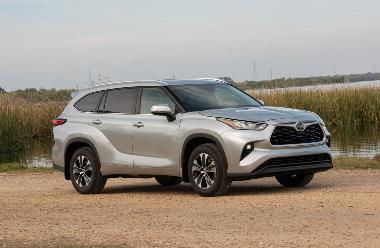
2020 Toyota Highlander: Redesigned mid-size SUV is larger, Sculpted and Refined
Tuesday, Feb 11, 2020
Toyota’s mid-size SUV, Highlander, has been redesigned from the ground up for 2020, as a fourth-generation sports-ute that brings new, bold styling …
Show MoreToyota’s mid-size SUV, Highlander, has been redesigned from the ground up for 2020, as a fourth-generation sports-ute that brings new, bold styling, augmented safety and comfort, and a continued focus on durability and reliability, while adding a hybrid version to its gas-model line-up.
Highlander debuted in late 2000 as an innovative mid-size crossover that steered away from the prevailing truck-based SUVs of the time, with a more customer-friendly unibody structure and four-wheel independent suspension. Gaining in size over three generations, and adding a third row, Highlander has sold more vehicles than any other mid-size SUV since 2016, and was the second top-seller in the segment last year.
Among the changes for 2020 are a bigger overall structure and larger dimensions, a bold, sculptured new exterior design and a new vehicle platform called Toyota New Global Architecture, that has been created to enhance driving refinement, comfort and safety. Other new innovations include standard Android Auto, Apple CarPlay®, SiriusXM®, Waze and Amazon Alexa Compatibility and Toyota Safety Sense 2.0. The cabin is available with 7- or 8-passenger seating; there is increased cargo room behind the third row, an increased number of optional safety systems, and a choice of a gas-powered V-6 or a new-generation hybrid powertrain.
The 2020 Highlander begins with a powerful stance, chiseled lines and sophisticated detailing with a modern personality. Setting off the new design, the L, LE and XLE grades feature a black front grille with silver trim, while the Limited and Platinum grades are distinguished by a black grille with chrome trim and chrome-plated lower rear fascia, premium projector headlamps and Highlander’s first-ever 20-inch alloy wheels. The new Highlander gains in stature, and now measures 194.9 inches long (a gain of 2.4 inches), 76.0 inches wide (up 0.2 inches) and the same 68.1 inches high on a 2.4-inches longer 112.2-inch wheelbase, to provide 8.0 inches of ground clearance. Highlander weighs as much as 4515 lbs, but my test XLE trim came in at just over 4200 lbs.
The cabin is plush and premium-feeling. Details include softer padded surfaces and a more tailored look with stitching that continues from the door trim to the instrument panel. The 2020 Highlander cabin offers improved functionality throughout, from a center console that offers available Qi wireless charging to plenty of storage spaces and USB charging ports. Sound-damping and soundproofing materials have been optimized throughout the vehicle, for a very quiet ride for the niche. And my test XLE trim added heated front seats, a wireless smartphone-charging pad, and a power sunroof, among other interior amenities.
Somehow, the increased exterior dimensions yielded lost interior space for driver and passengers. The well-crafted and quiet cabin seats seven or eight, depending on configuration and now provides a tight 38.4 inches of front headroom (a loss of 1.1 inches), 39.4 in row two (down 0.2 inches) and 36.1 inches in row three (a gain of 0.2); leg room is 40.4 inches up front (a loss of 3.8 inches), a gain of 2.6 in row two to 41.0 inches, and the same child-worthy 27.7 inches in row three; with shoulder room of 59.0 58.7 and 55.0 (down slightly from last-gen). The lost space seems to translate to increased cargo space behind row three, to 16 cubic-feet, a gain of 2.2 cubic-feet over last year.
Available in 4-cylinder and V-6 powertrain configurations, the 2.7-liter 4-cylinder engine is coupled with a 6-speed Electronically Controlled automatic transmission with FWD, and with intelligence (ECT-i), sequential shift mode and snow mode. The system is good for 186hp and 175 lbs.-ft. of torque for an EPA estimate of 20mpg/city, 24mpg/highway and 22/combined.
The 3.5-liter V-6 engine that powered my test vehicle, delivers 295hp and 263 lbs.-ft- of torque, mated with a Direct Shift – 8AT, 8-speed Electronically Controlled automatic transmission with intelligence in either FWD or AWD, for an EPA fuel rating of 21mpg/city, 29mpg/highway and 24mpg/combined for AWD. My week of tests yielded an average of 24.7mpg in mixed-use tests.
Acceleration and performance were sneaky-fast, or faster than expected, with good response from a stop and in passing. Track tests showed a 7.2-second hand-timed zero-to-60mph sprint and a 15.5-second quarter-mile.
Available in LE, XLE, Limited and Platinum trims, as well as Hybrid trims, the gas-version Highlander starts at $34,600 for the base L and tops out with the Limited Platinum starting at $46,850. The Hybrids add about $3000 per trim. My test XLE based at a $39,600 starting price that included the 3.5-liter engine, 8-speed automatic transmission, FWD, Toyota Safety Sense™ 2.0 package, Qi-Compatible Wireless Charging, Moonroof, Heated Front Seats, Seating for eight, LED headlights and Daytime Running Lights, and Android Auto and Apple CarPlay compatible. In Blueprint exterior paint matched to a Black Softex interior, we upgraded to AWD for an additional $1600; and we added Premium Audio (six speaker and 8.1-inch touch-screen) with Dynamic Navigation for $1040. All-weather floor liners were $218; Body side moldings were $209; Door edge guards added $125; Chrome high Performance LED Fog Lights added $139; Rear bumper protector added $135; and delivery, processing and handling fees added $1120 for a sticker-as-tested of $44,186.
> Visit www.CarlisleEvents.com for more on the automotive hobby.
Mike Blake, former editor of KIT CAR magazine, joined Carlisle Events as senior automotive journalist in 2004. He's been a "car guy" since the 1960s and has been writing professionally for about 30 years. </I>
-
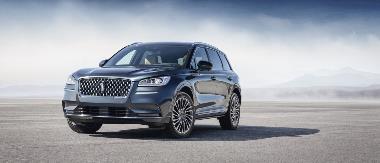
2020 Lincoln Corsair: Quiet, Luxurious, Compact Crossover Takes Flight
Tuesday, Feb 4, 2020
The legendary Vought F4U Corsair fighter planes flown by the US Navy and US Marines during WWII and the Korean War, were considered by many to be a …
Show MoreThe legendary Vought F4U Corsair fighter planes flown by the US Navy and US Marines during WWII and the Korean War, were considered by many to be among the most formidable fighter-bombers in the Pacific, and were flown by Major Gregory “Pappy” Boyington’s "Black Sheep" Squadron. With most Corsairs out of service by 1964, Corsairs flew their final combat missions in 1969 during the “Football War” between Honduras and El Salvador, in service for both air forces.
Fast forward 50 years and change the venue from air to land, and in Lincoln’s new naming strategy, the Corsair Premium Compact Crossover joins the Lincoln Nautilus (previously the MKX), Lincoln Aviator and Lincoln Navigator with sea- or air-oriented monikers -- though a Lincoln press release says Corsair’s name was … “inspired by the Latin word ‘cursus’, meaning journey. Lincoln also markets Corsair as … “the most expressive representation of ‘Quiet Flight’, inviting a more youthful clientele to the brand.” Lincoln’s “Quiet Flight” design treatment features the manufacturer’s new signature grille, full-width taillights and an “S-section” side panel contour. The design accentuates the Corsair’s stance as one of the lowest and widest SUVs in the segment.
Sharing its underpinnings with the all-new 2020 Ford Escape, the Lincoln Corsair replaces the Lincoln MKC in the line-up, and it is packed with standard features including active noise control, AdvanceTrac with Roll Stability Control, Hill Start Assist, Intelligent Access with push-button start, Lincoln Connect with 4G LTE Wi-Fi hotspot powered by Lincoln Way app, remote start, reverse sensing system and lots more.
Corsair’s exterior embraces Lincoln’s “Sculpture in motion” elements of both the full-size Navigator and three-row Aviator, while building on these cues with even more flair. Painstakingly sculpted in clay, Corsair features sophisticated contouring throughout the body section of the door, offering a deep landscape of curvature and relief with a fast-falling roofline.
Enhancing the architecture are body-color, power, heated sideview mirrors with memory and integrated blind spot mirror; LED headlamps with LED signature lamps and autolamp automatic on/off feature; Lincoln Co-Pilot360; and power liftgate.
Available in 10 exterior colors and five interior schemes, the 2020 Corsair measures 180.6 inches long, 76.2 inches wide and 64.1 inches high, on a 106.7-inch wheelbase. Curbweight for my AWD 2.3-liter Reserve trim was 3848 lbs.
The Corsair cabin is quiet, comfortable and filled with conveniences including 10-way power seats that are heated in the front row, with power lumbar and a driver’s side memory feature. There’s also power steering, power windows with one-touch up/down and SYNC® 3 with an 8-inch LCD capacitive touch screen.
Quietness is paramount for Corsair. To ensure a hushed ride, a dual-wall dashboard in the engine compartment provides an additional barrier between passengers and the engine, as an air gap acts to keep vibrations out of the cabin. Active Noise Control enhances overall sound quality throughout, and the quiet is only broken by six unique symphonic chimes – replacing standard electronic alerts to inform drivers of everything from an open fuel door to an unbuckled seat belt.
Roomy inside, you get 39.5 inches of front headroom and 38.7 inches in the rear seats, 43.2 inches of front legroom with 38.6 inches in the second seats, and 57.1 inches of row one shoulder room with 50.8 inches in row two.
From a safety perspective, Corsair is outfitted with a Personal Safety System for driver and front passenger with dual-stage front airbags; driver’s knee, glove box-door-integrated knee, front-seat side, and Safety Canopy System with side-curtain airbags and rollover sensor.
Powerwise, Corsair offers two engine choices … a turbocharged 2.0-liter inline-four that produces 250hp and 280 lb-ft of torque, or a 2.3-liter turbo I-4 that delivers 295 horses and 310 lb-ft. Both are mated to an 8-speed SelectShift Automatic transmission and while the smaller engine is available in FWD and AWD configurations, the 2.3 is primed for AWD only. The 2.0-liter engine is rated at 21mpg/city, 29mpg/highway and 25mpg/combined, while the 2.3-turbo gets 21/city, 28/highway and 24/combined. My week of testing with the larger engine averaged 24.7mpg.
My test Corsair was quicker than expected, steered more carlike than SUV-like, and leveled out road imperfections well enough for the niche. My 2.3-turbo felt faster than the stopwatch indicated, but we still managed a good-for-the-niche 6.2-second hand-timed zero-to-60mph sprint and a 14.8-second hand-timed quarter-mile.
The standard 2020 Lincoln Corsair starts at $35,945 for the 2.0-liter engine, and the Corsair Reserve starts at $42,630 for the 2.0 and FWD. My test Corsair Reserve upgraded to the 2.3-liter turbo and base-priced at $51,010 for AWD and a slew of augmentations including the Reserve I equipment package (Ventilated Front Seats, Heated Second Row Outboard Seats, Heated Steering Wheel, Rain Sensing Wipers, Windshield Wiper De-Icer, Adaptive Cruise Control with Traffic Jam Assist – Includes Lane Centering, Speed Sign Recognition, and Stop-and-Go, 360-Degree Camera with Front Camera Washer, Front Sensing System, Evasive Steering Assist, Reverse Brake Assist and Active Park Assist Plus). In Flight Blue for an extra $695, my Corsair played off a Beyond Blue leather interior for an extra $500. With Destination Charges of $995, an Acquisition Fee of $645 and some manufacturer equipment bundle discounts, my test 2020 Lincoln Corsair Reserve stickered at $52,205.
> Visit www.CarlisleEvents.com for more on the automotive hobby.
Mike Blake, former editor of KIT CAR magazine, joined Carlisle Events as senior automotive journalist in 2004. He's been a "car guy" since the 1960s and has been writing professionally for about 30 years. </I>
Book with a preferred Hotel

Book online or call (800) 216-1876
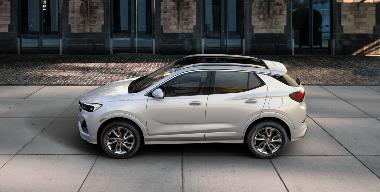
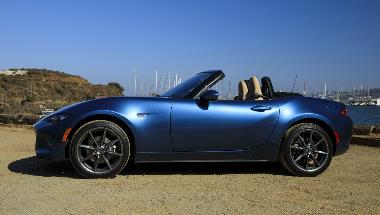
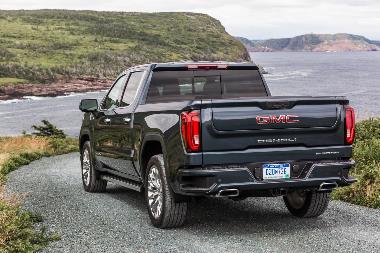
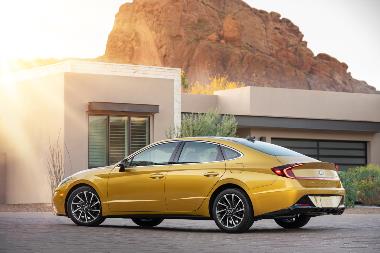
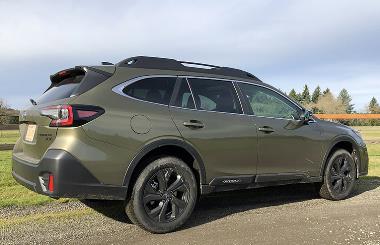
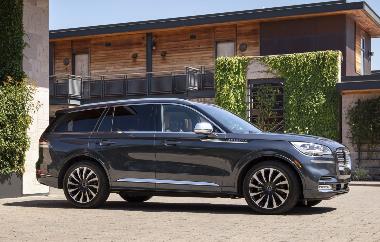
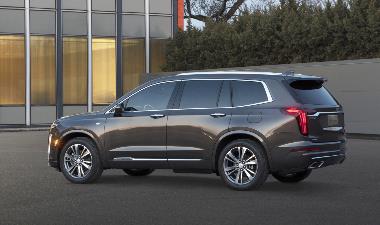
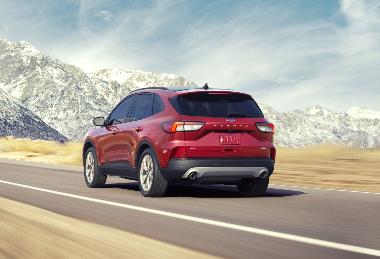
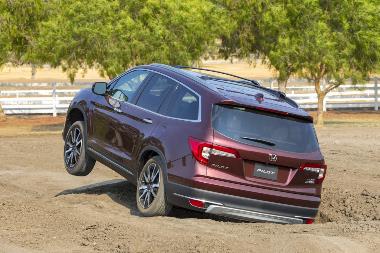
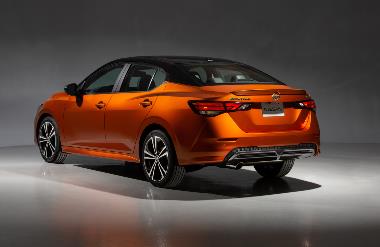
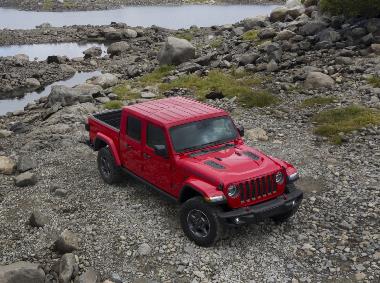
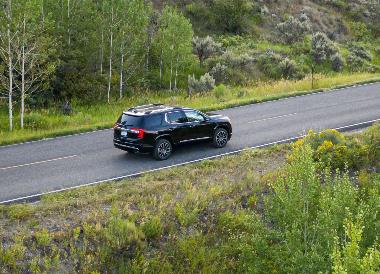
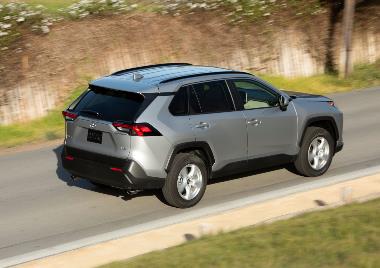

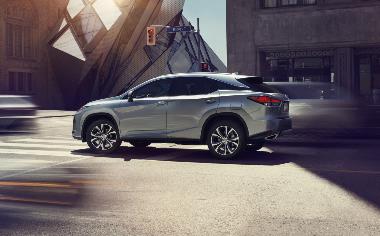
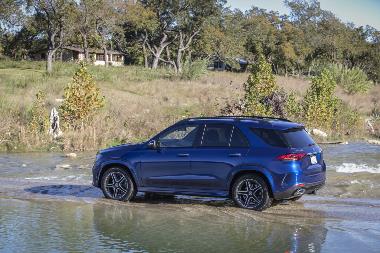
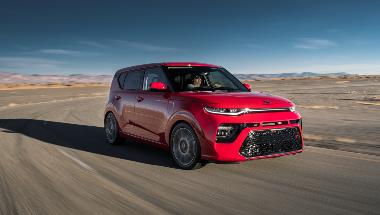
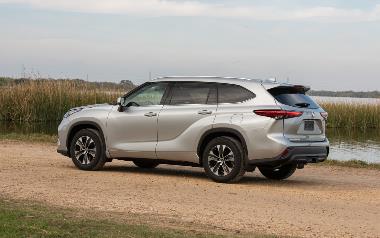
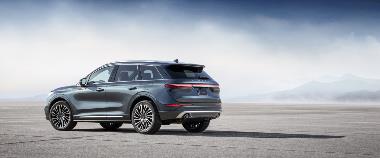



.png?sfvrsn=8cce4cd8_2)



